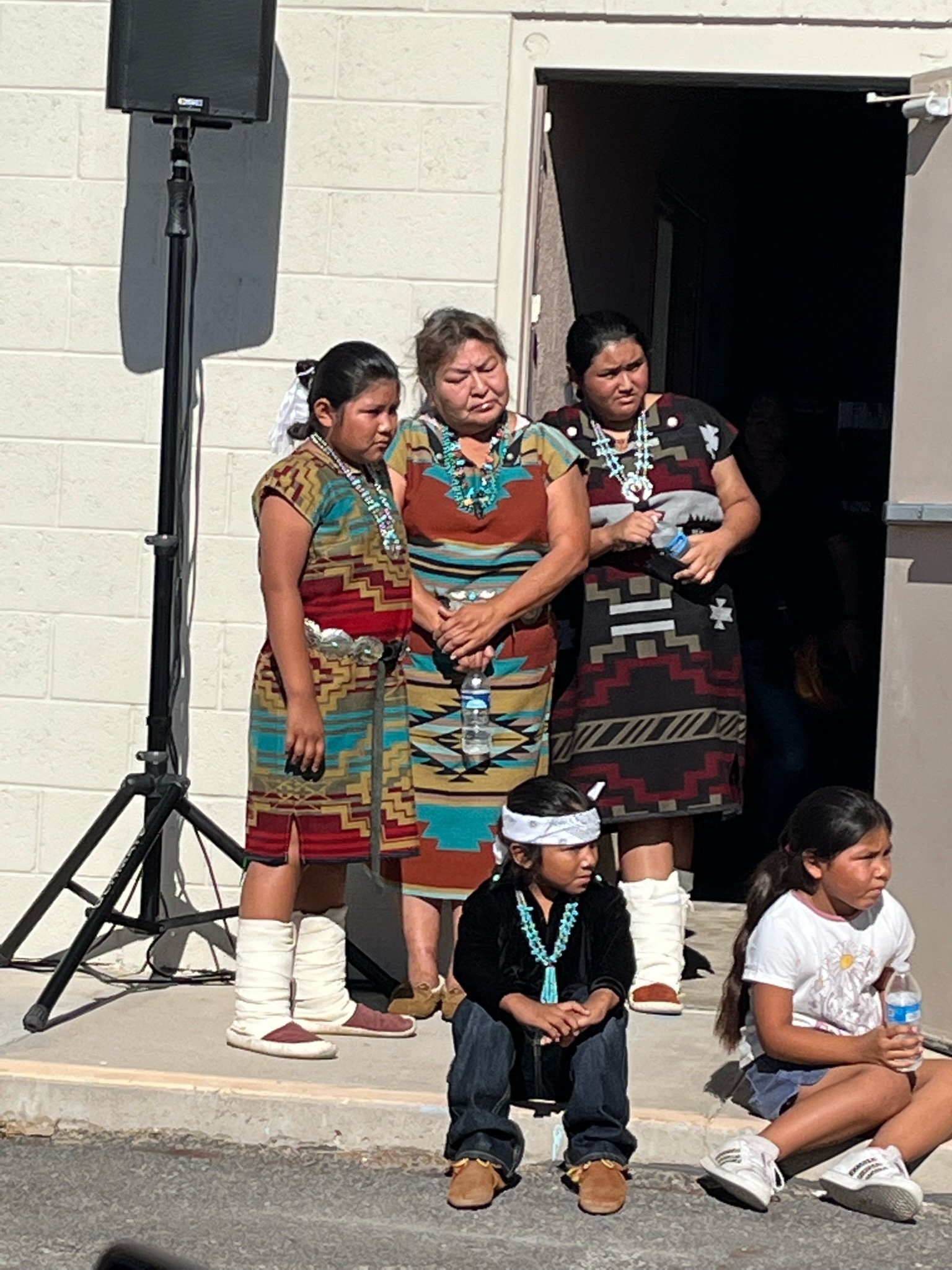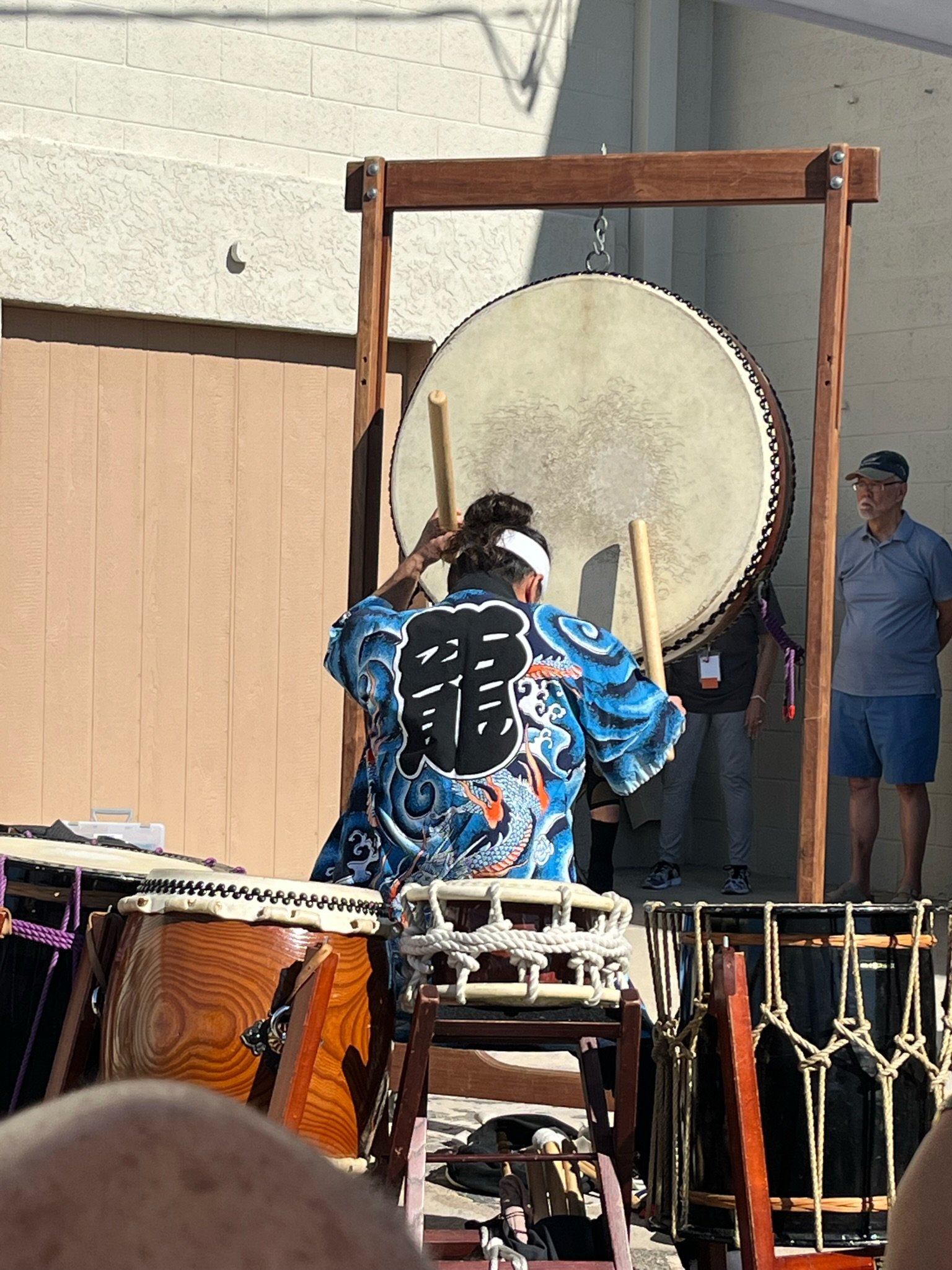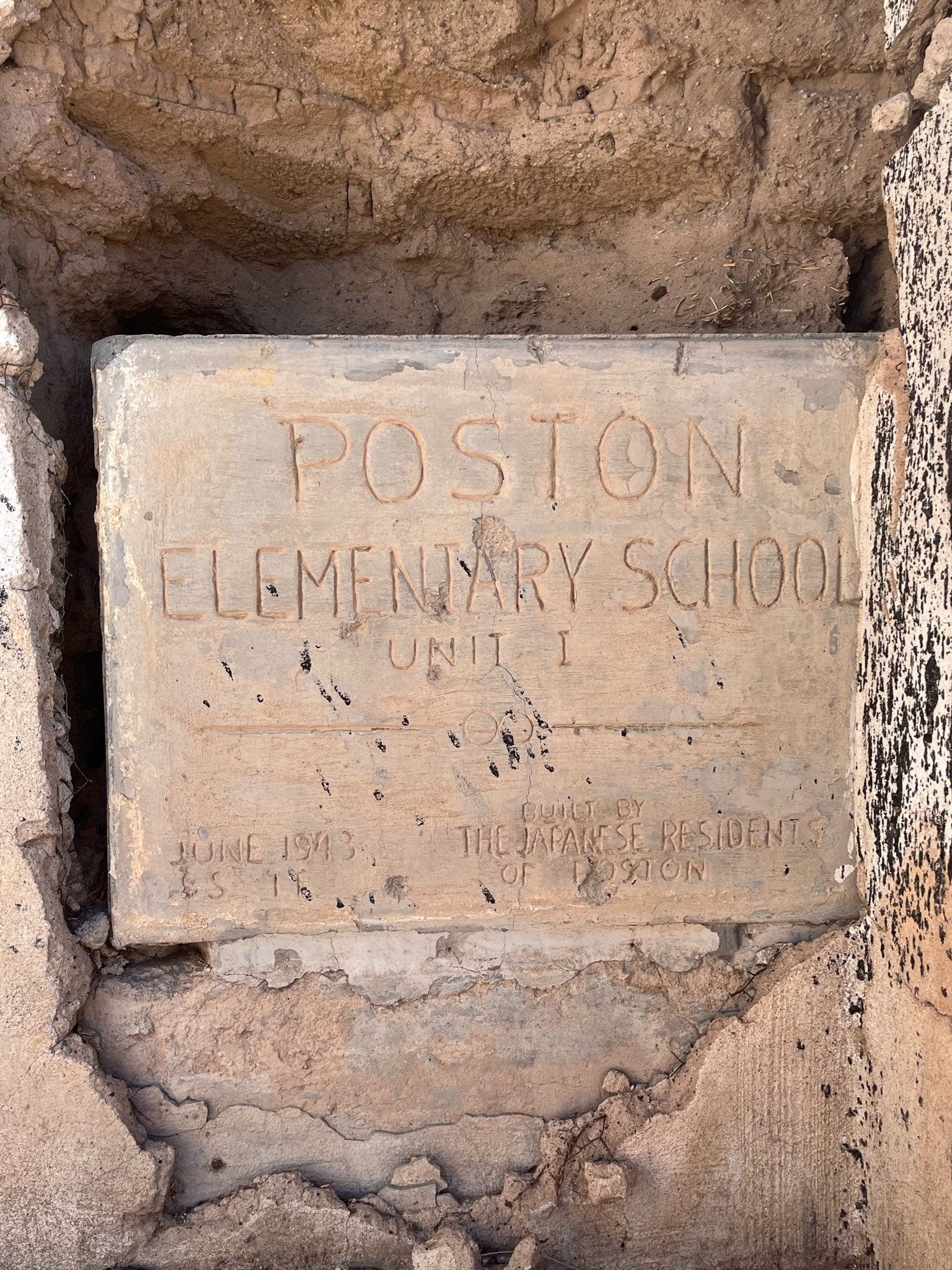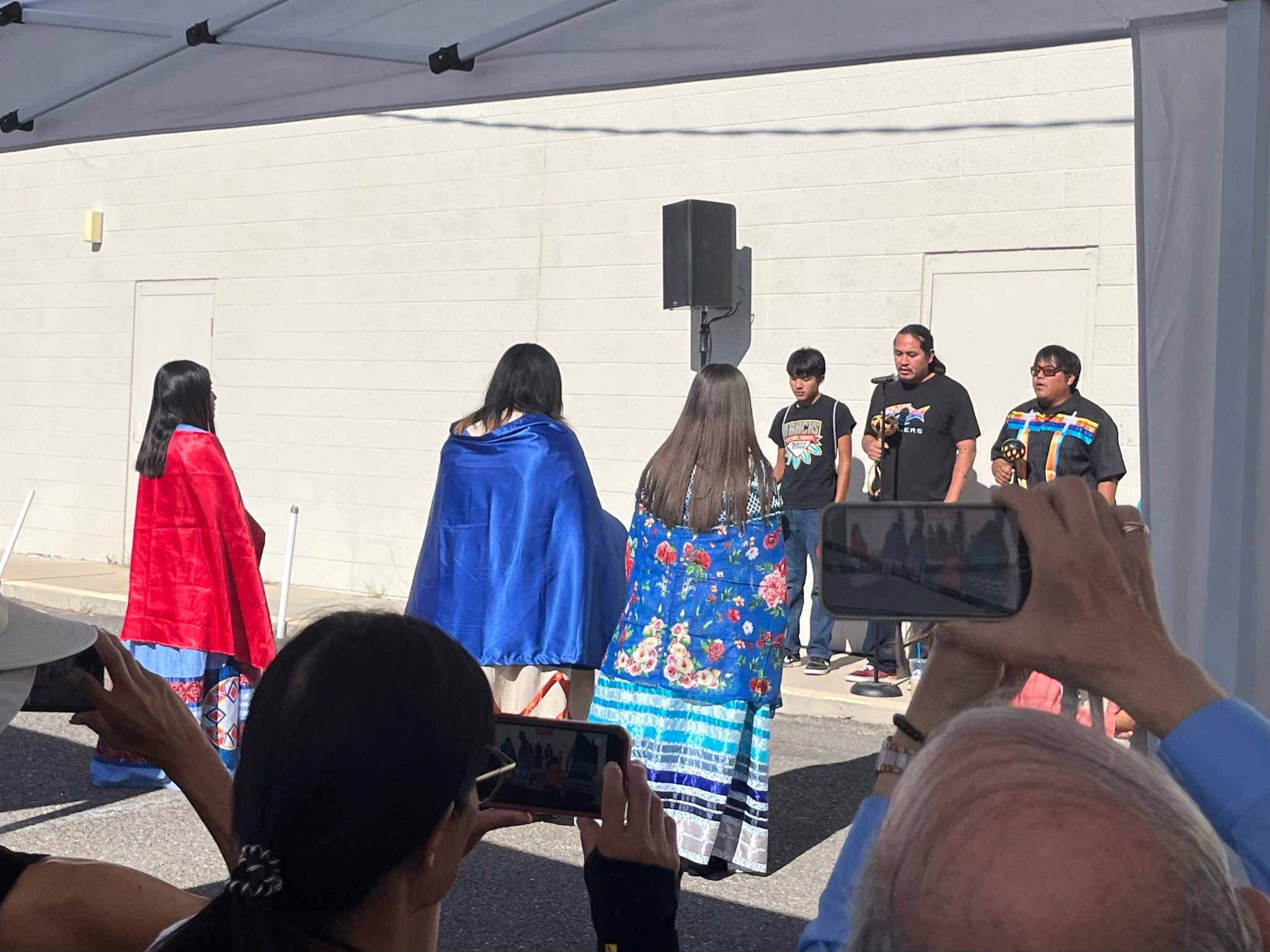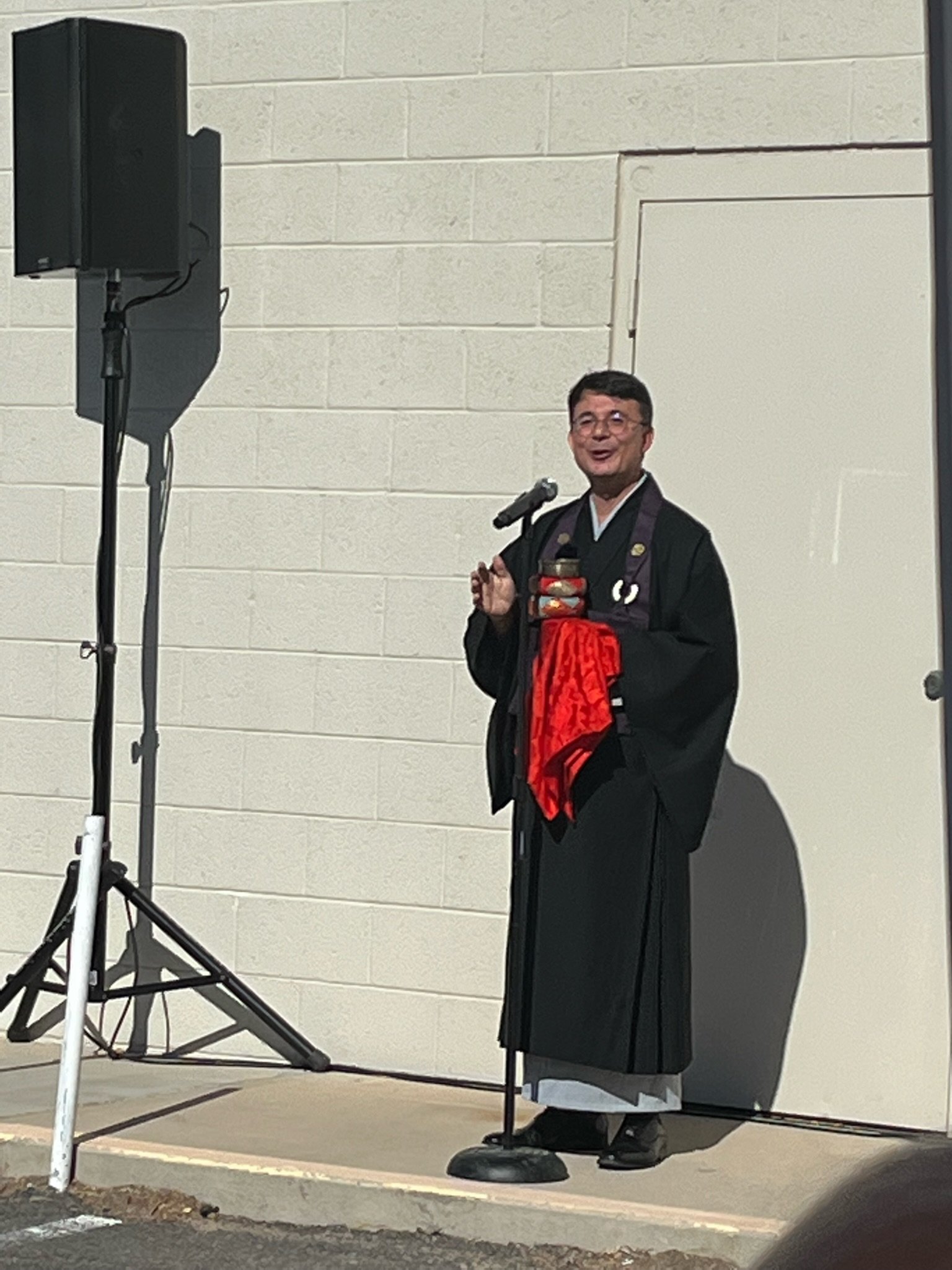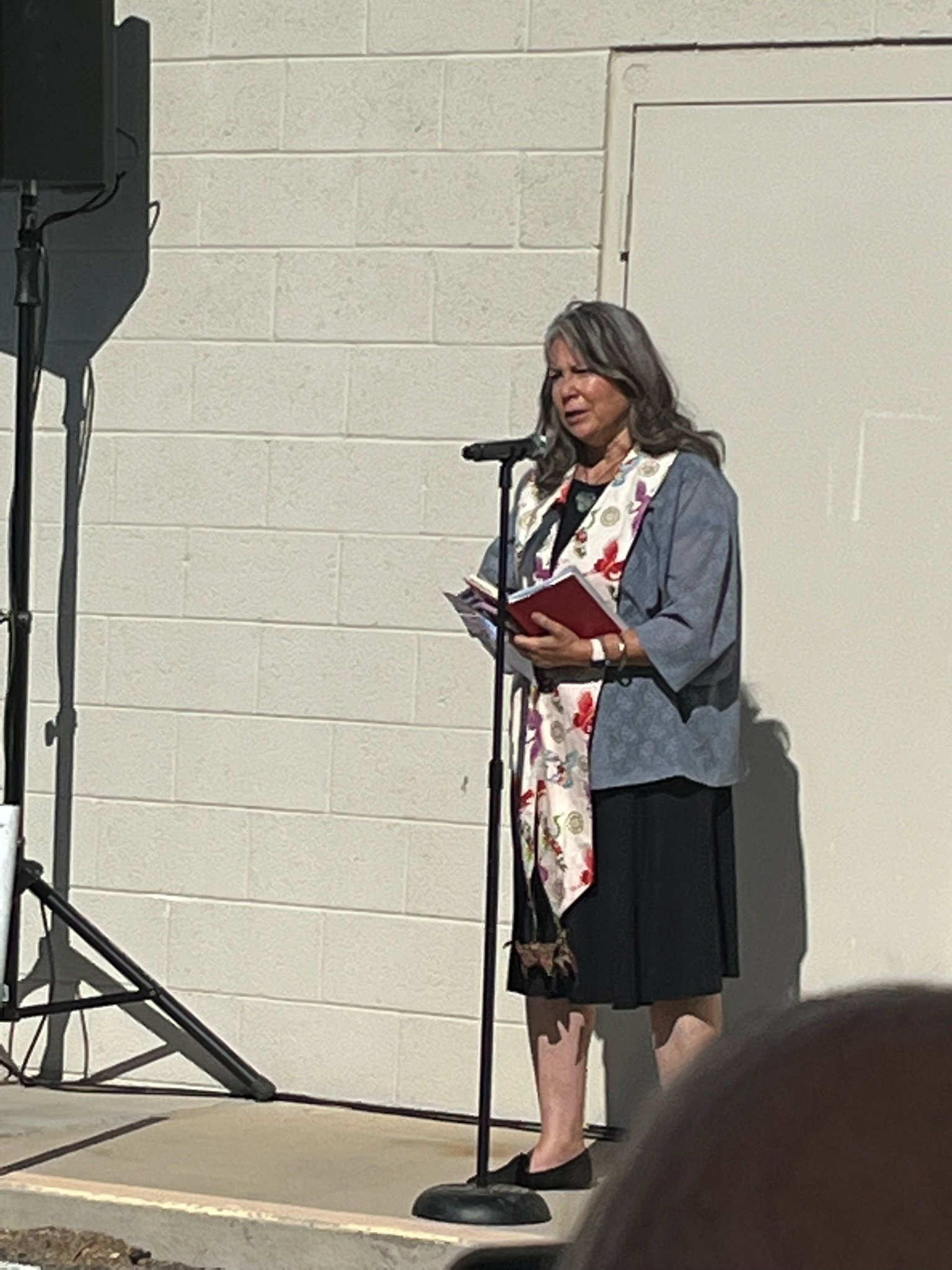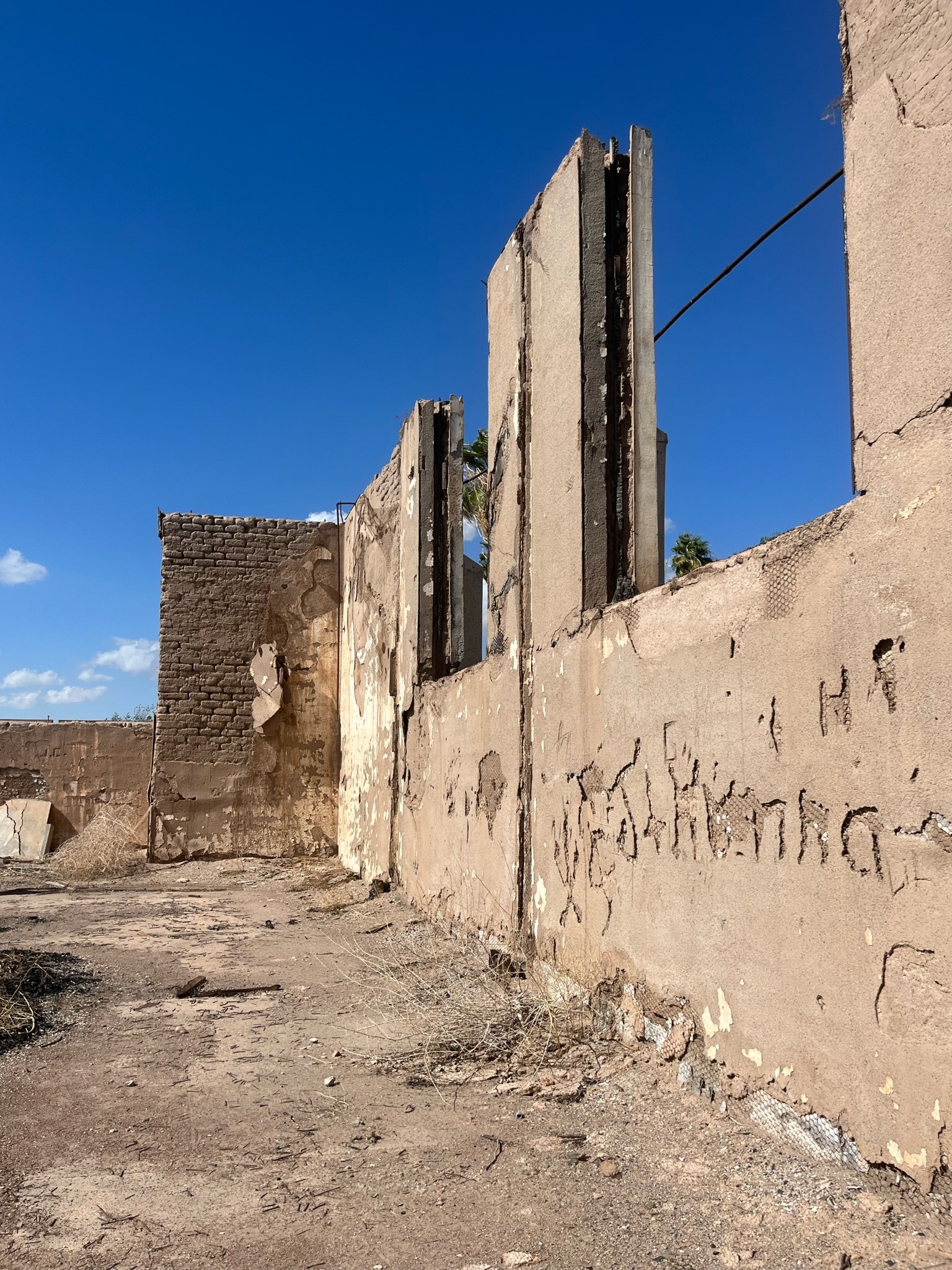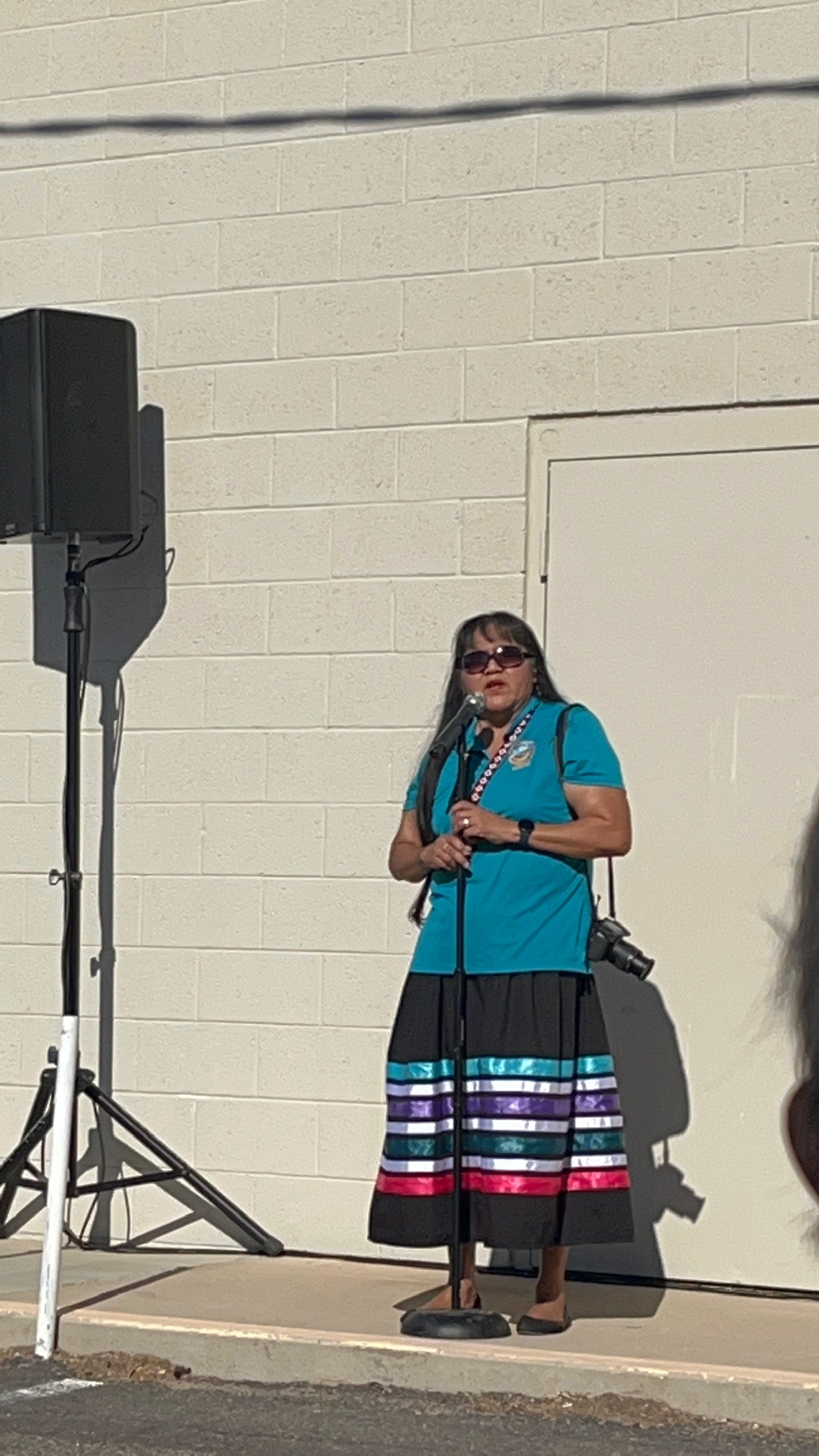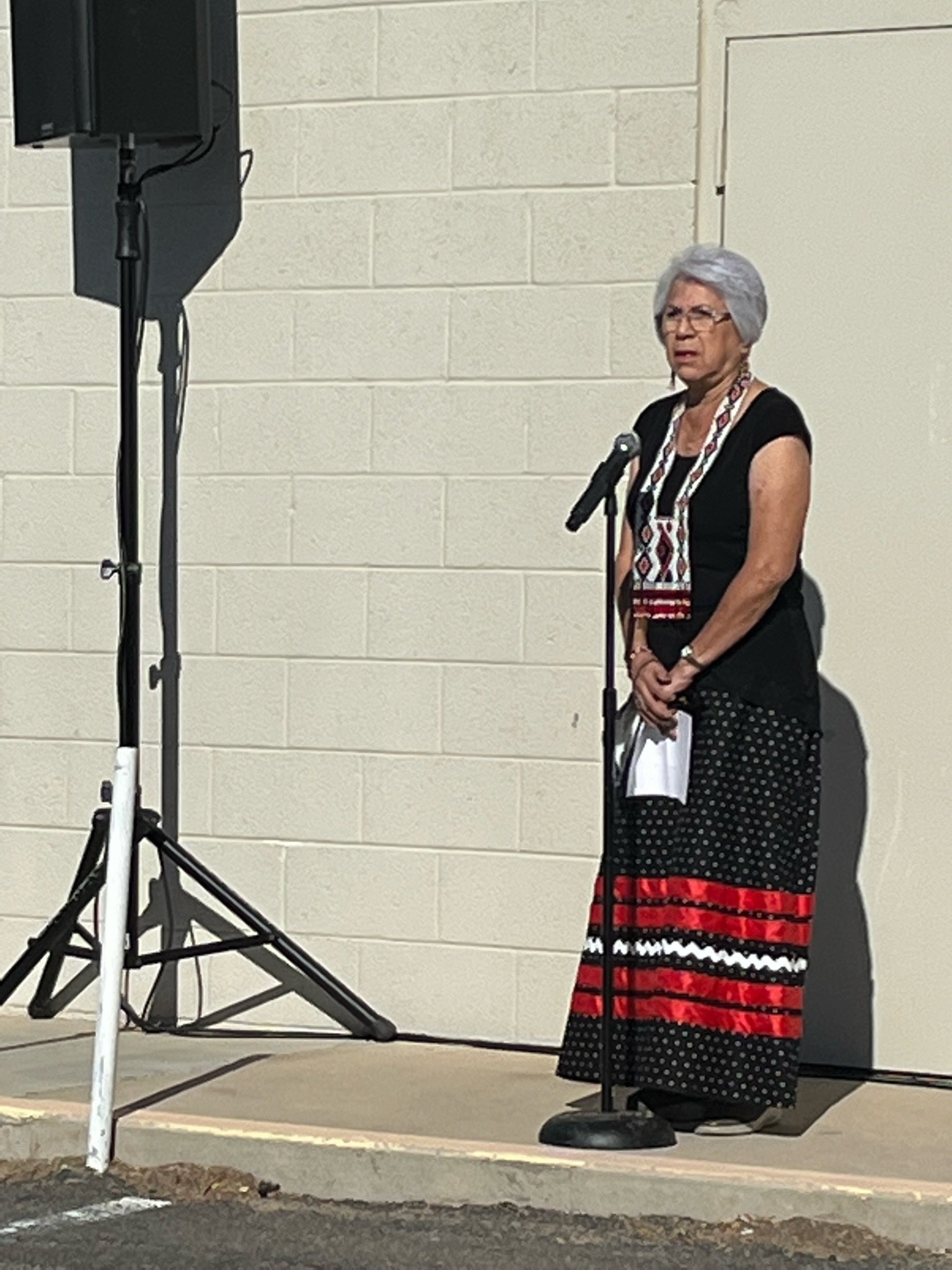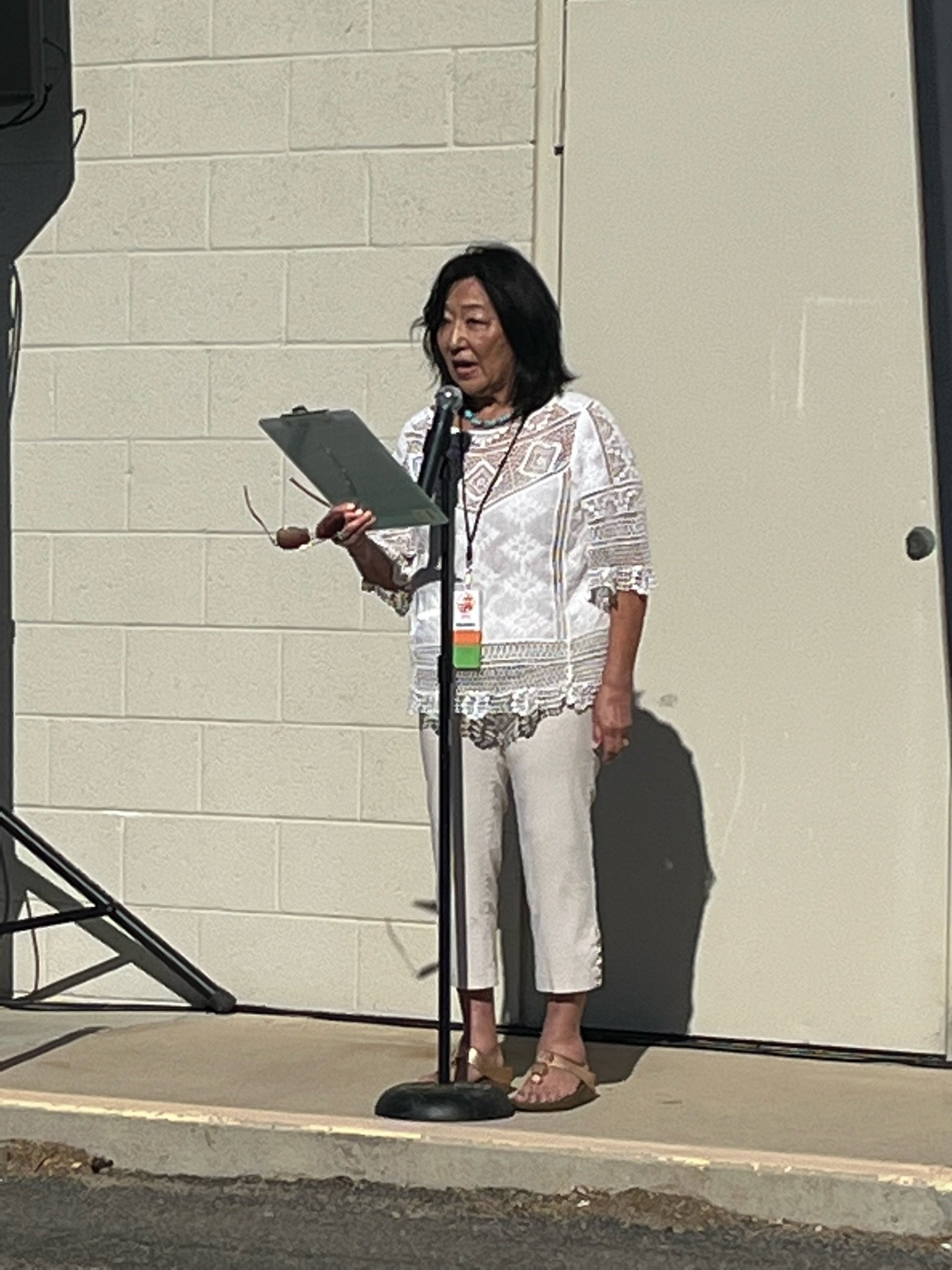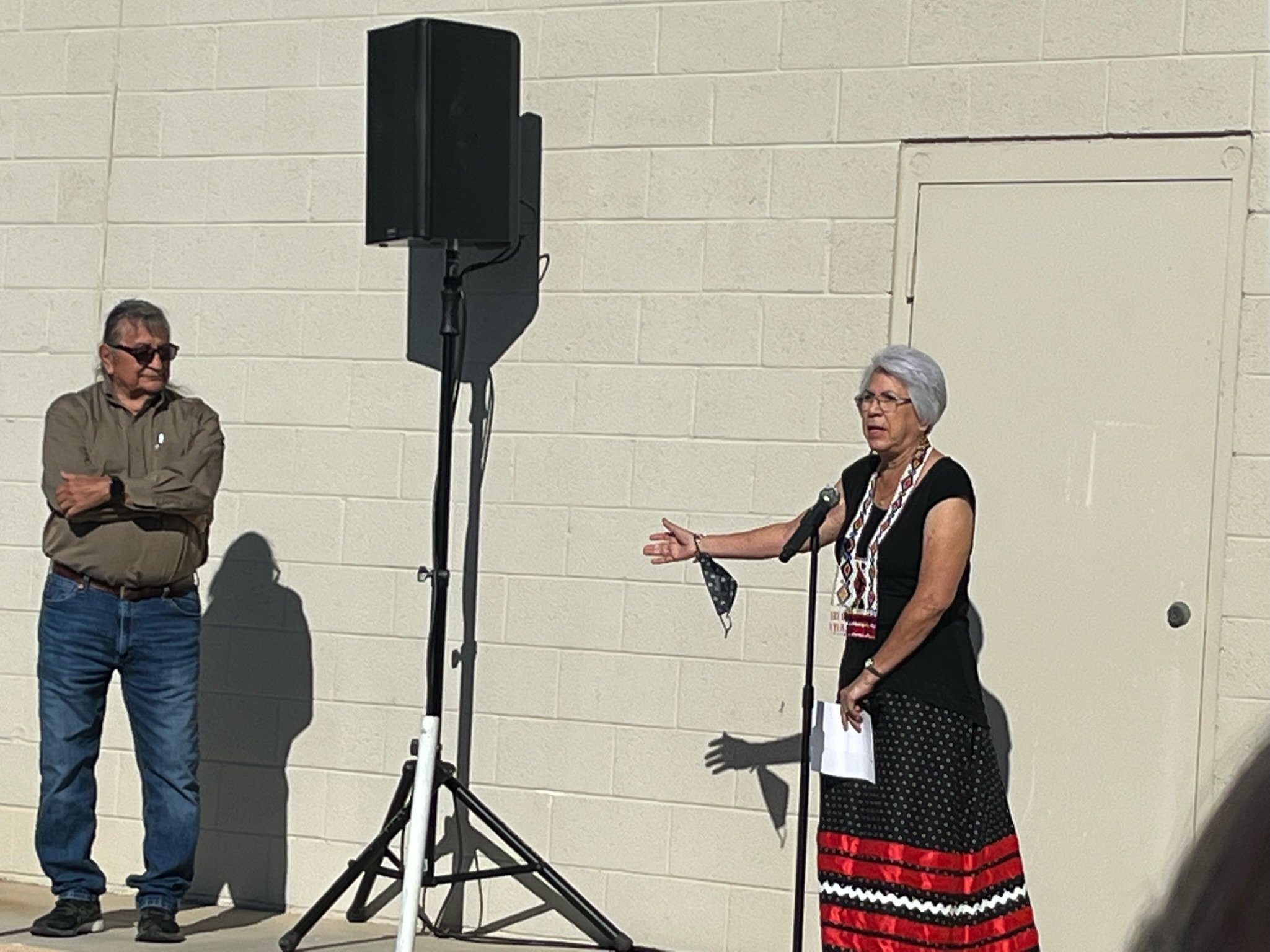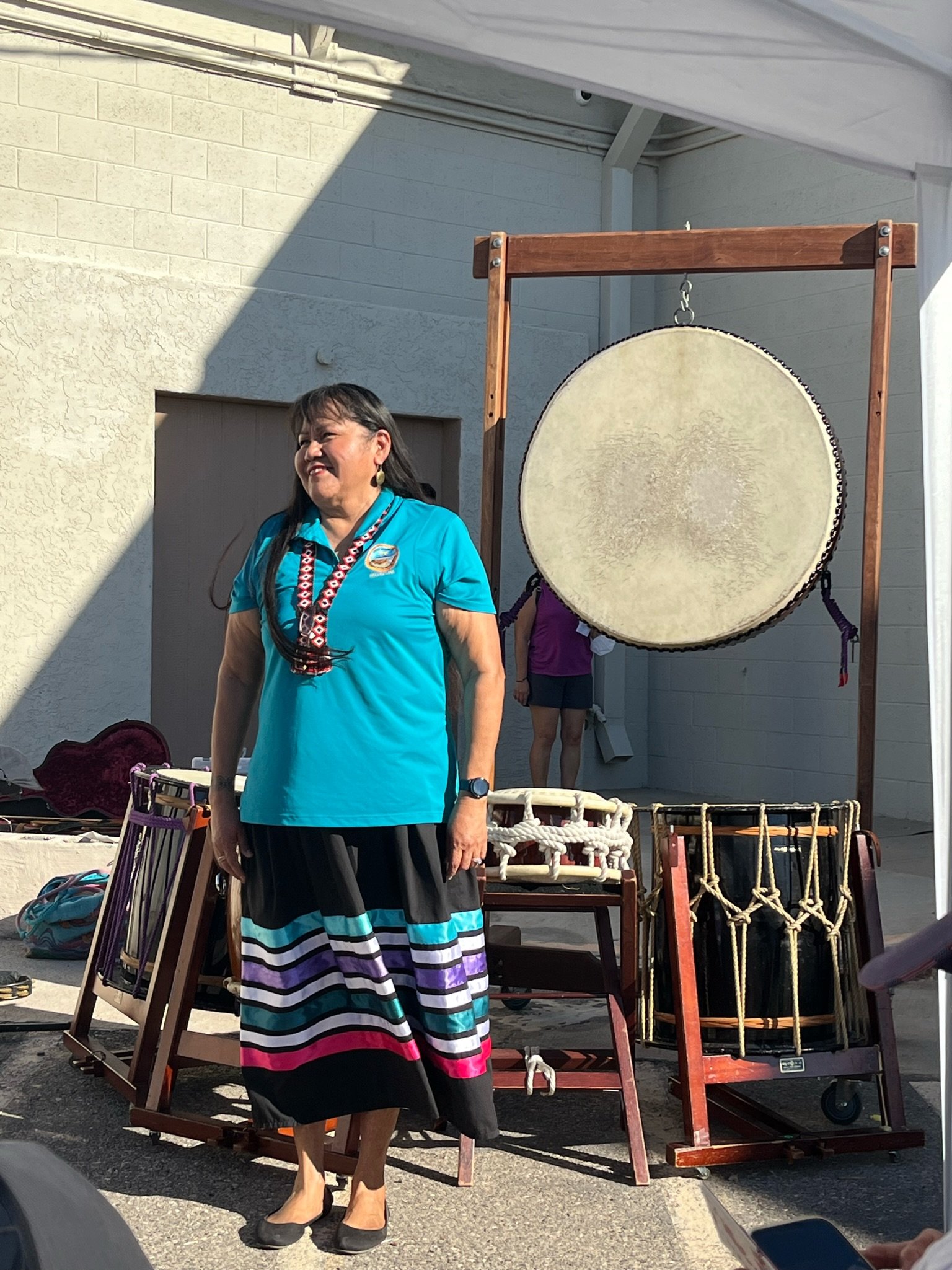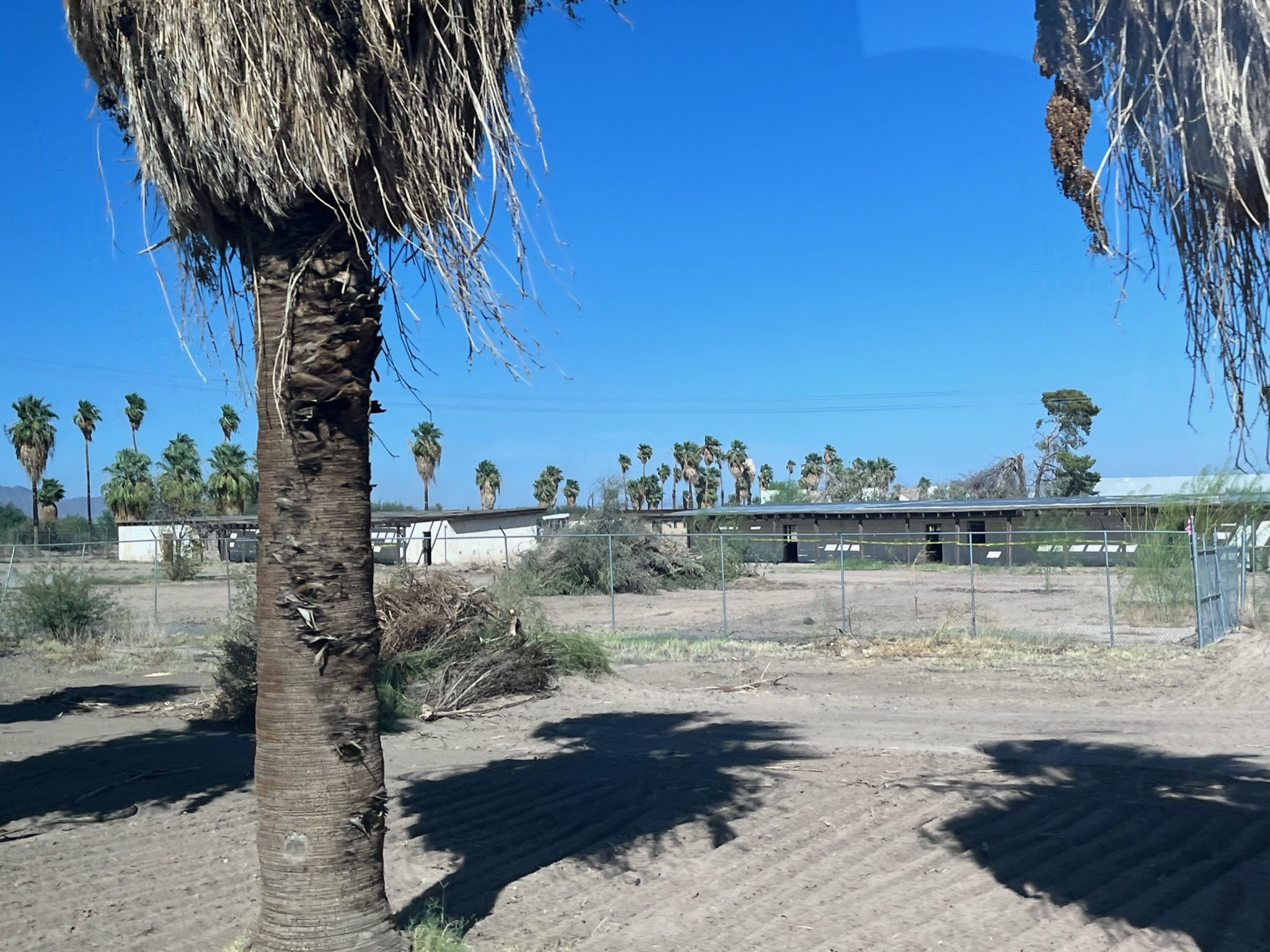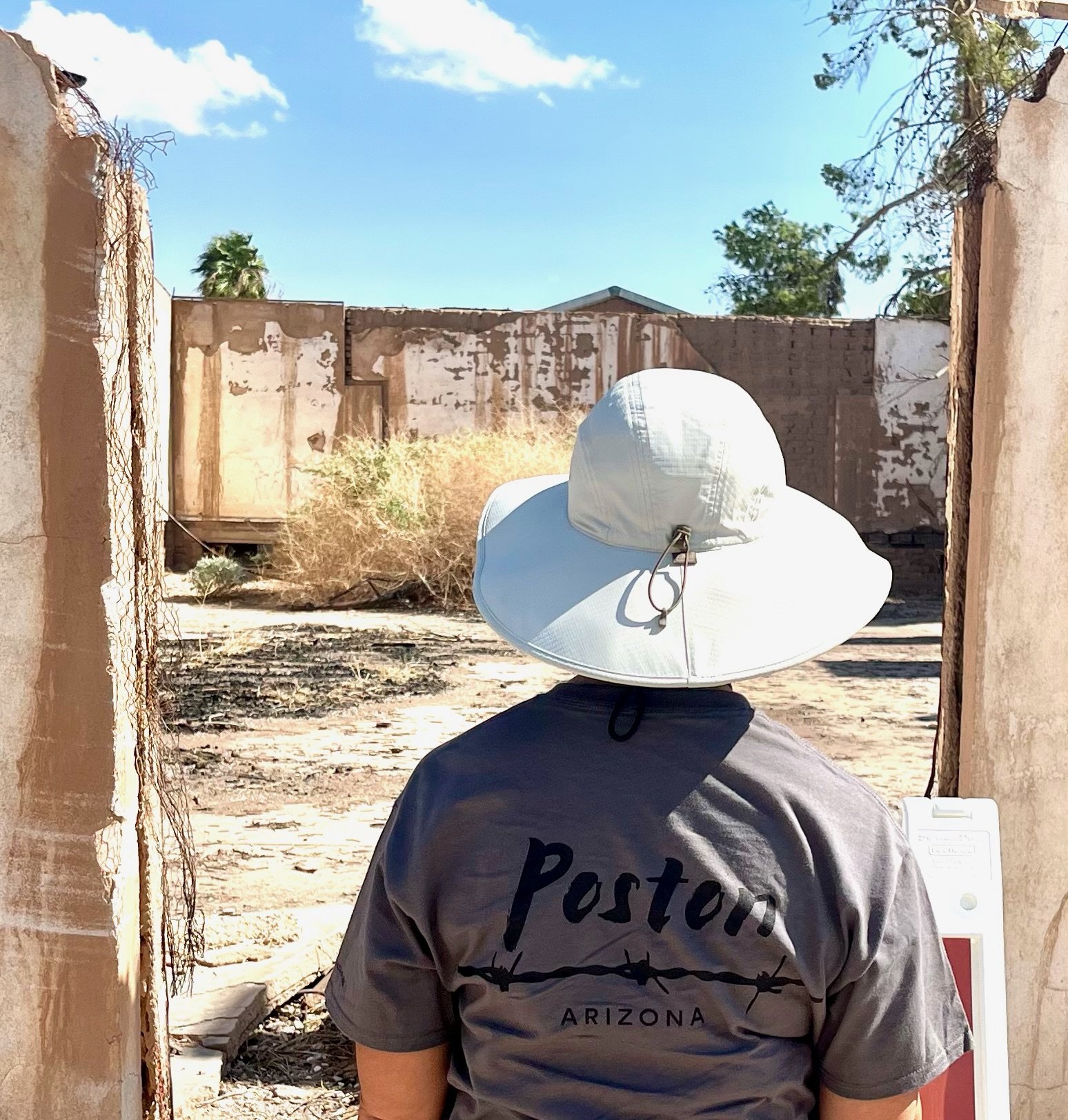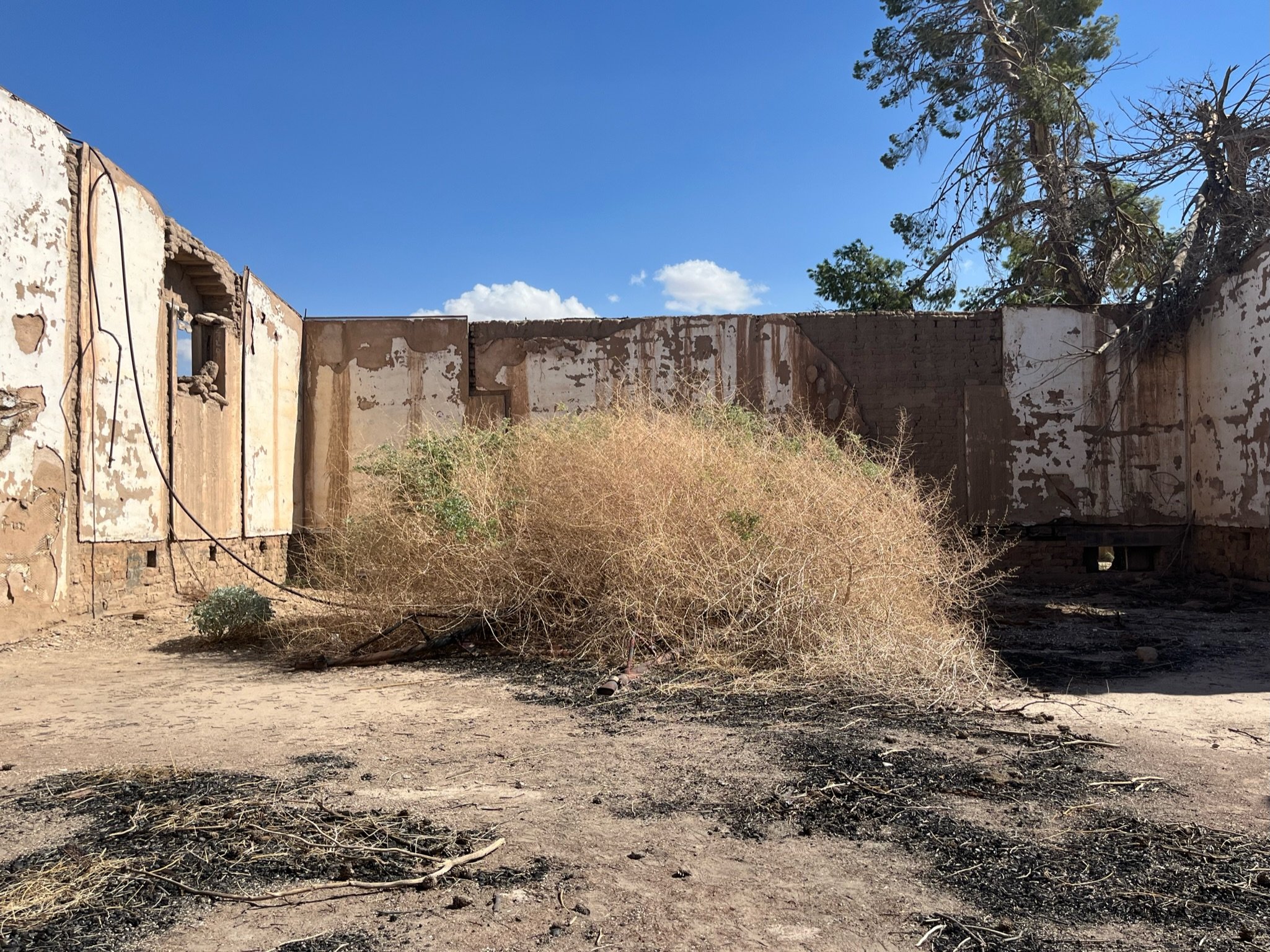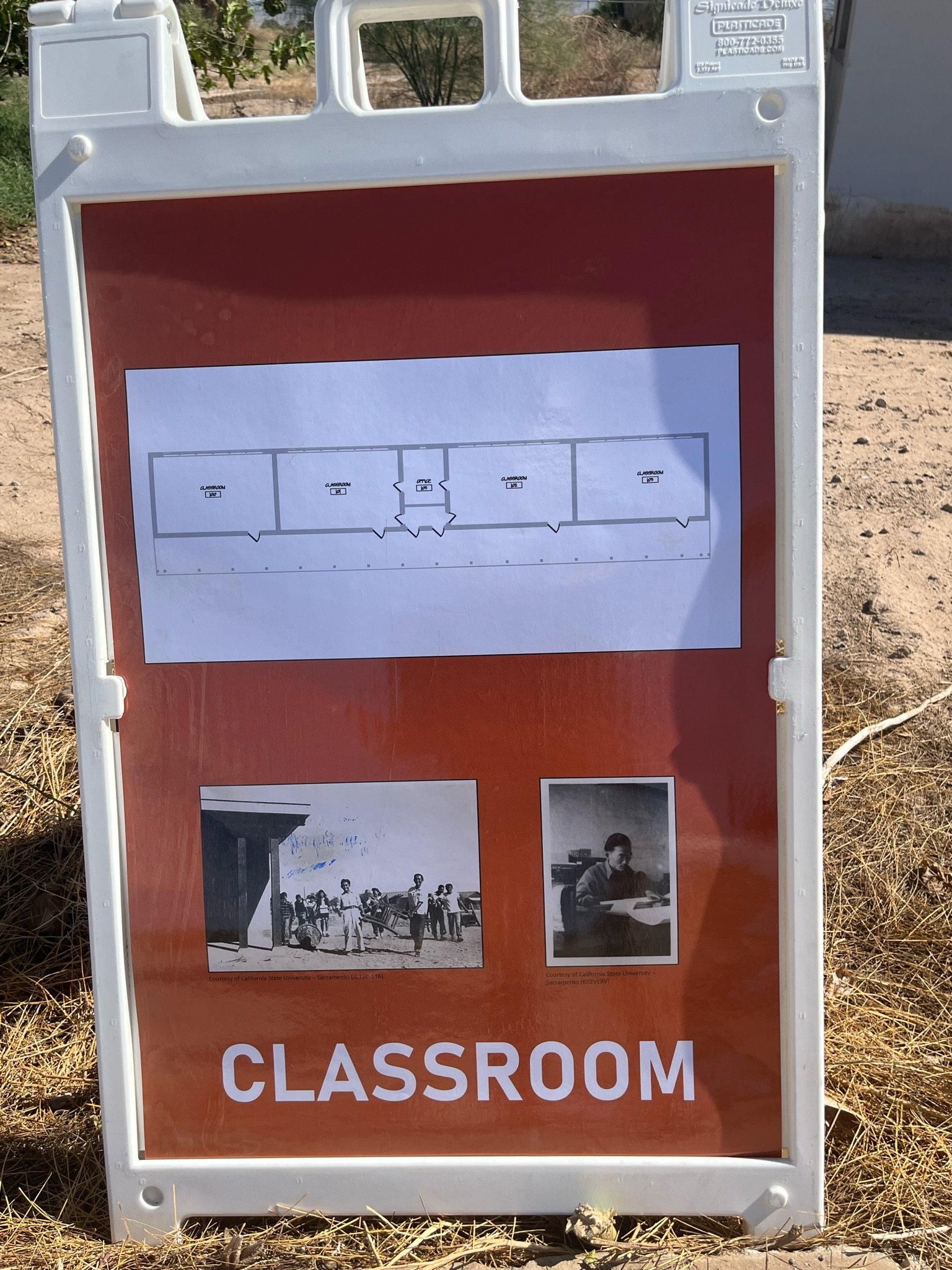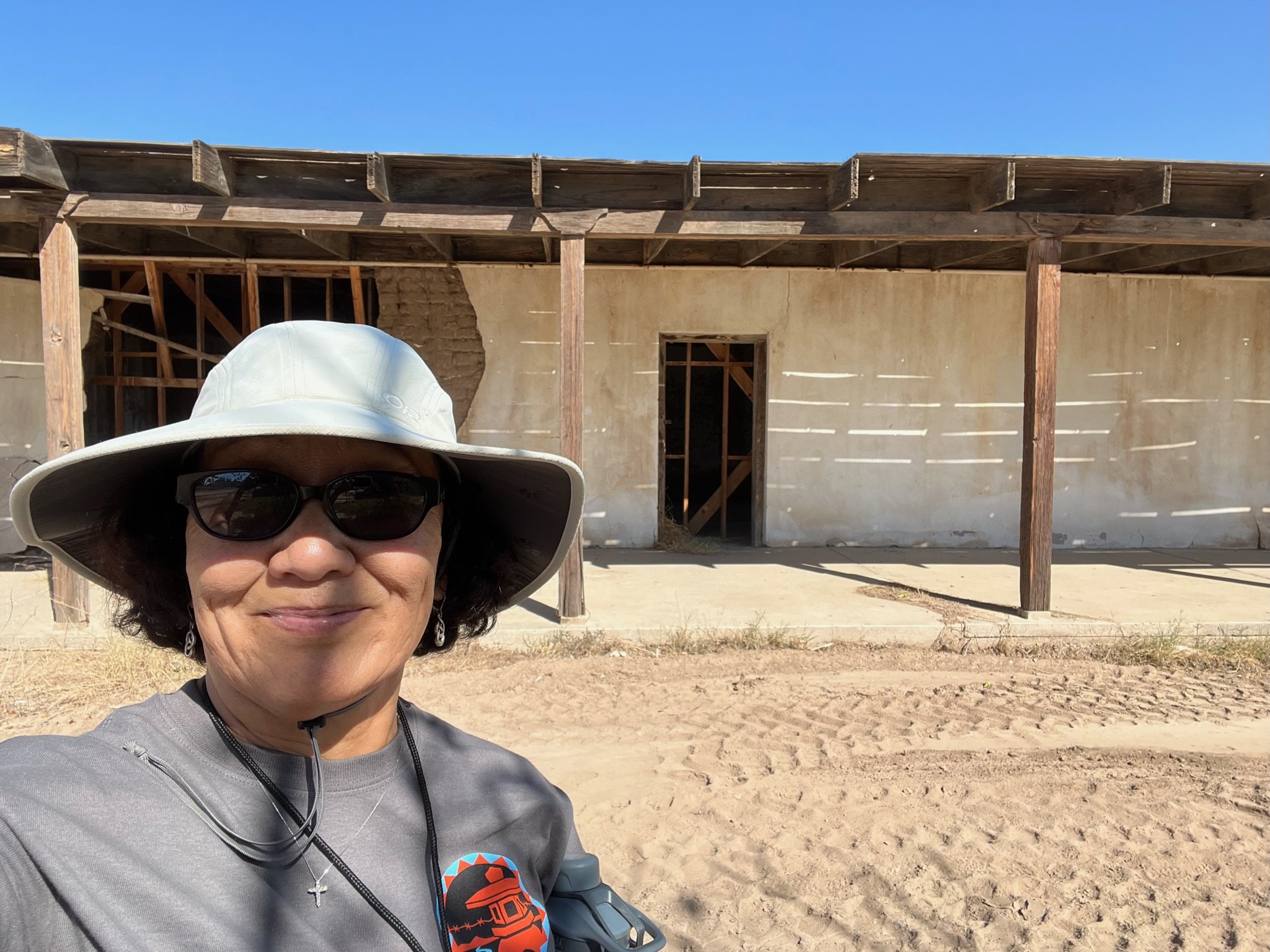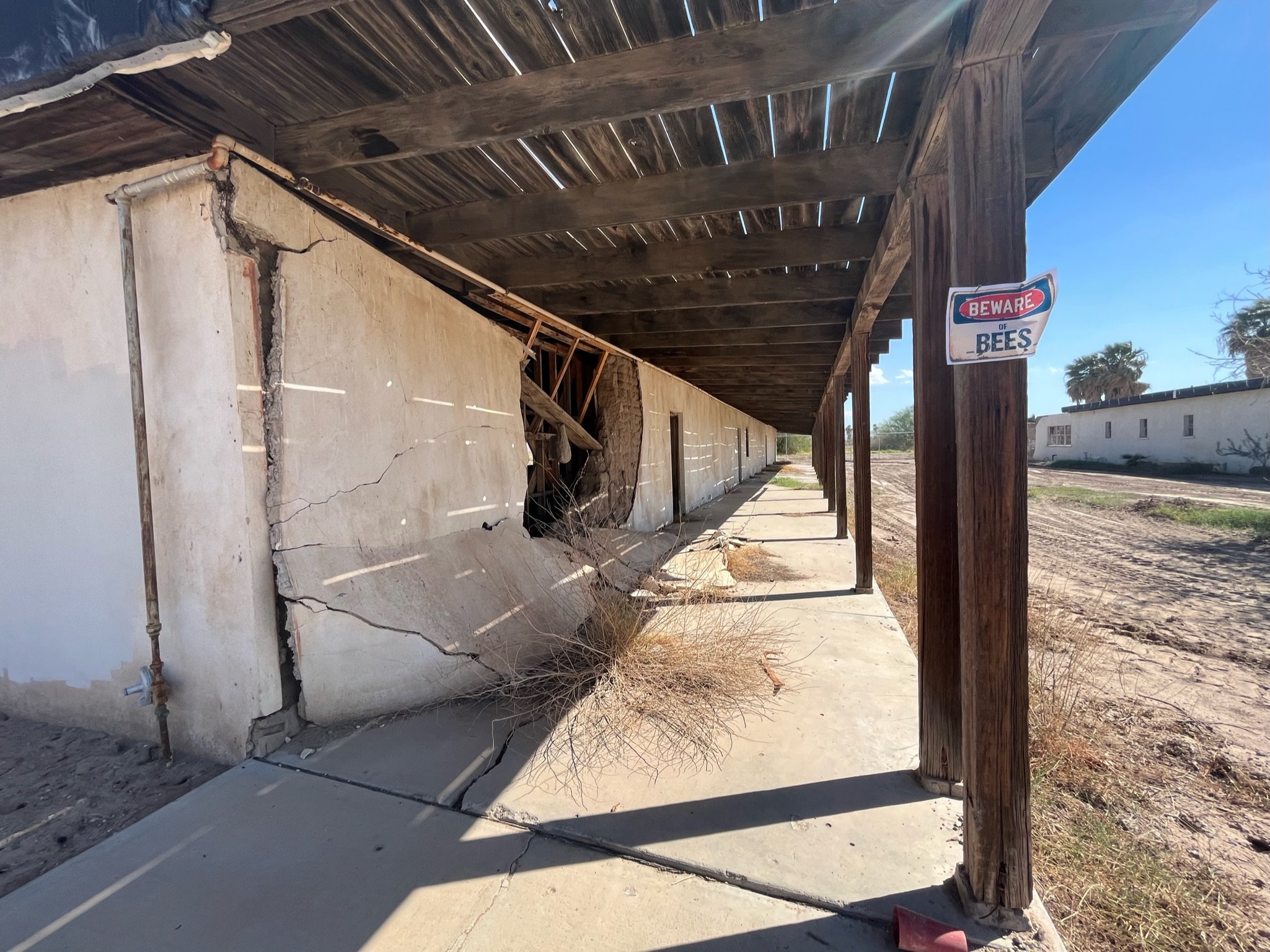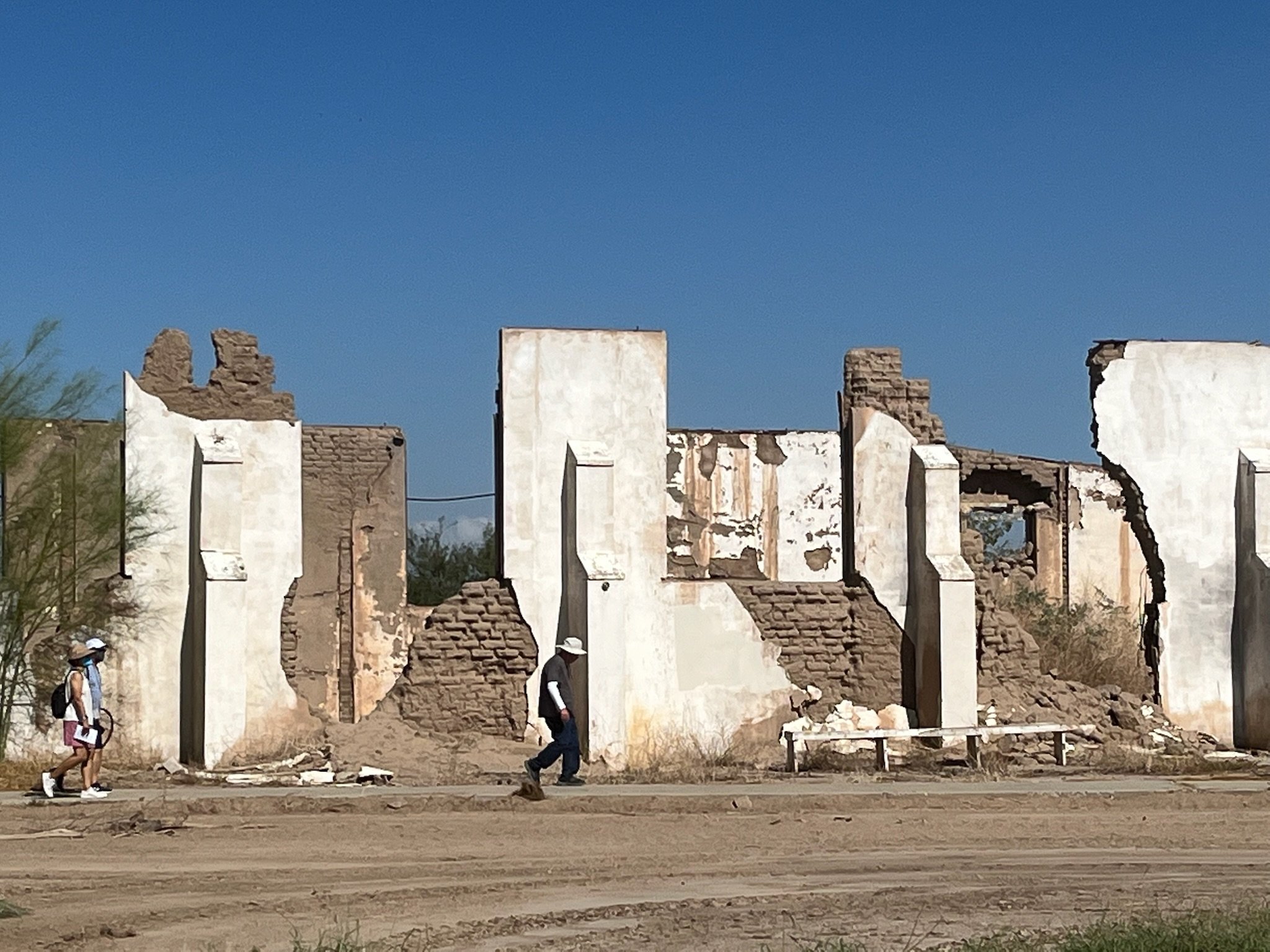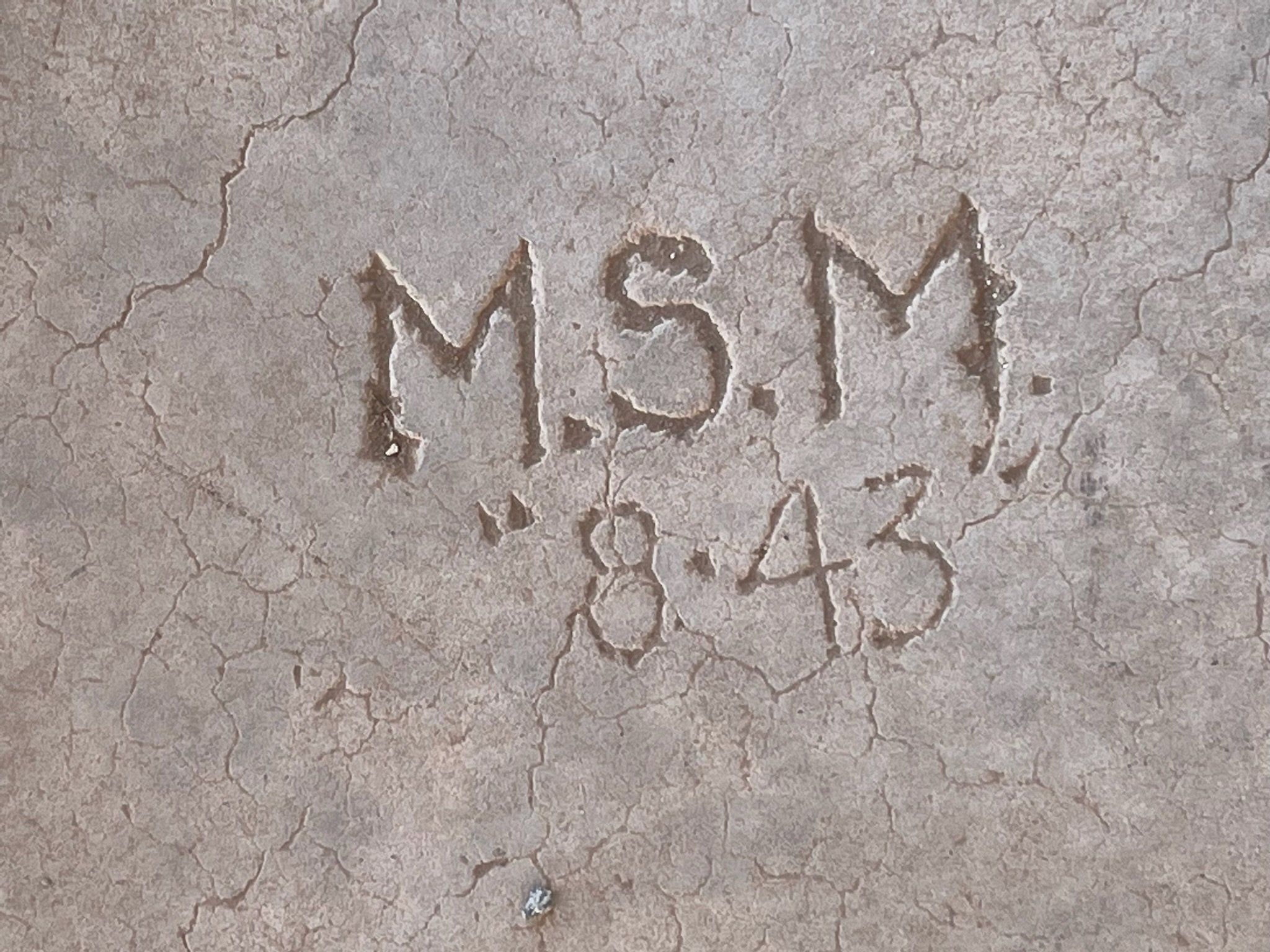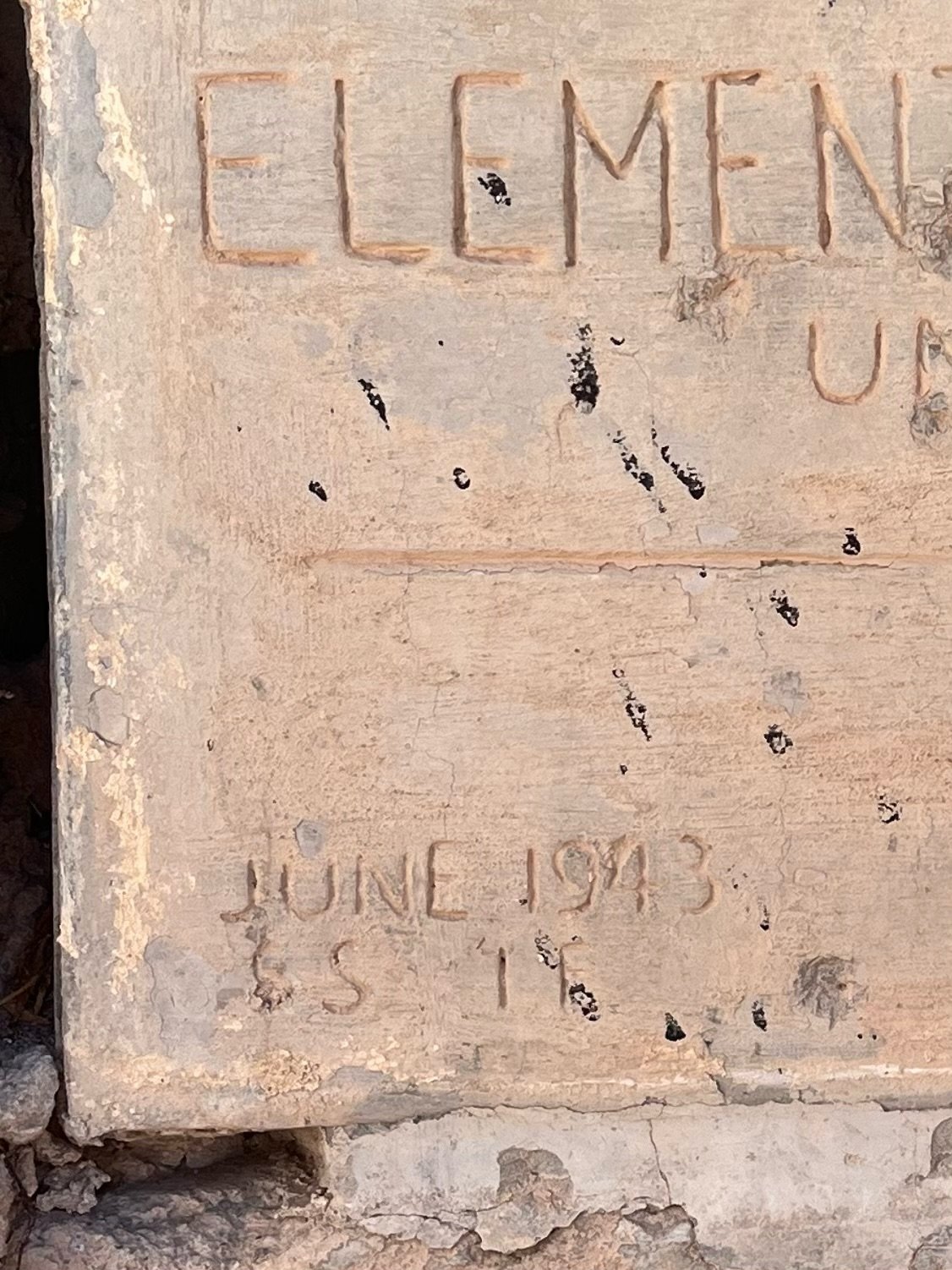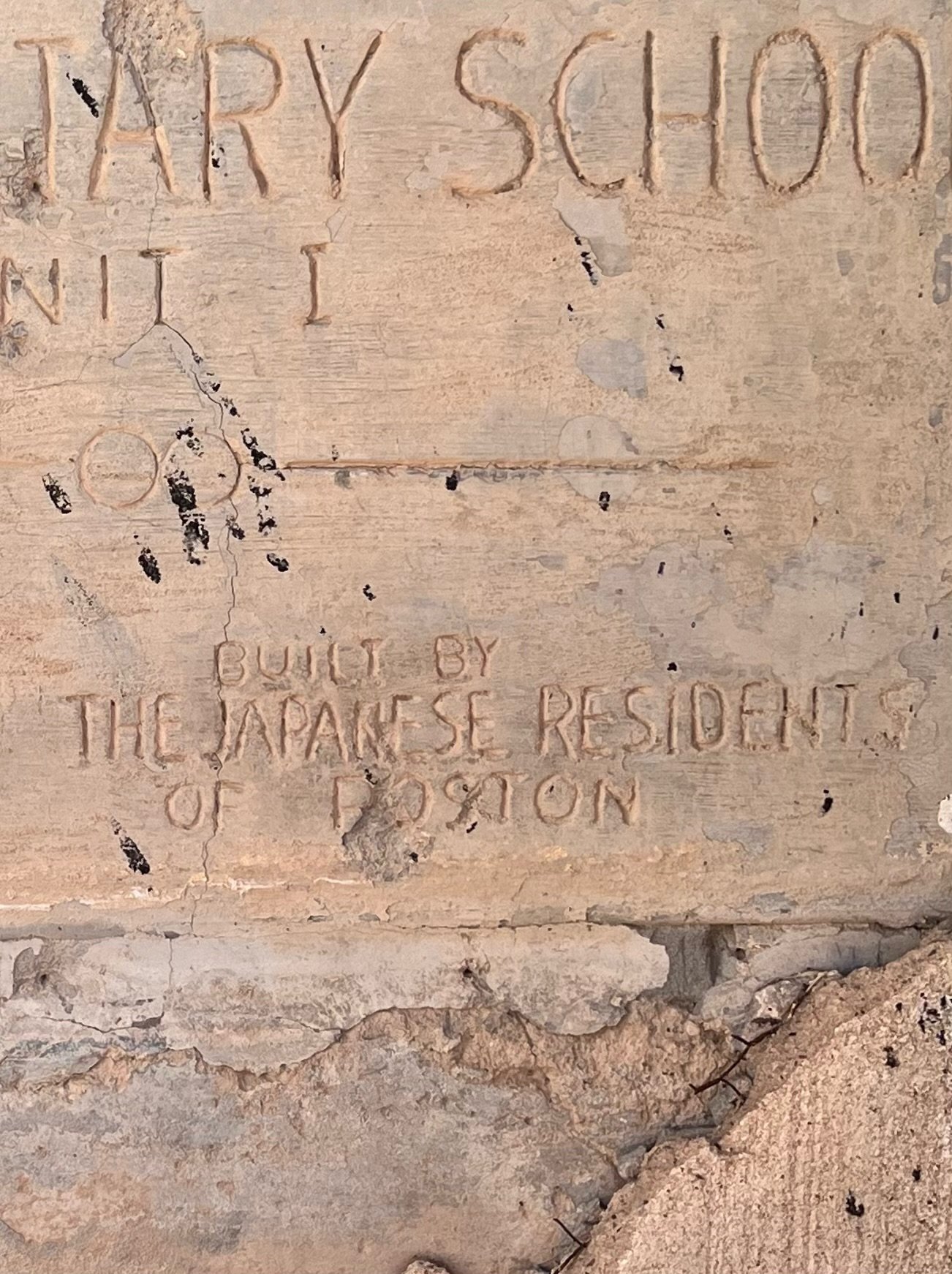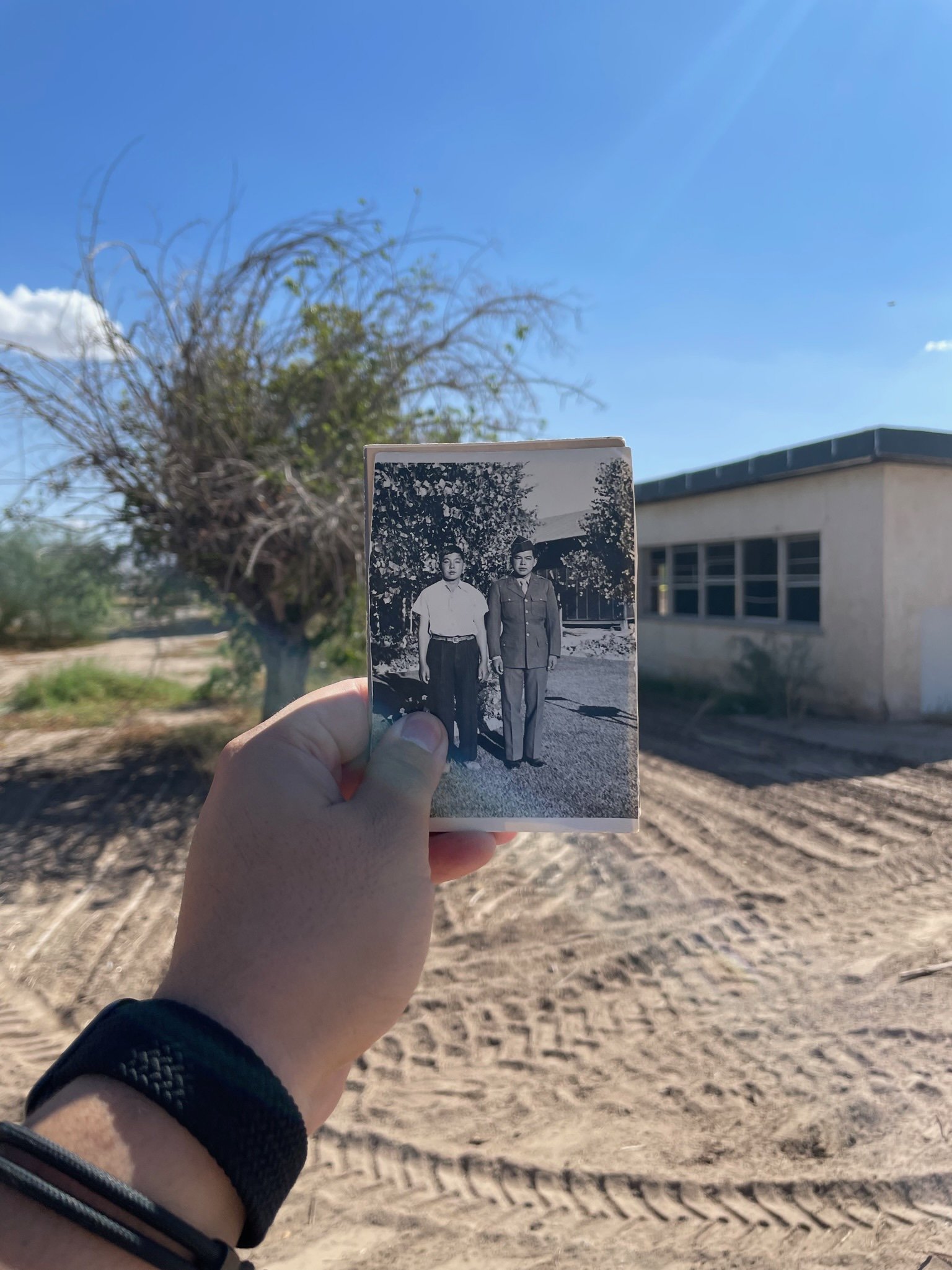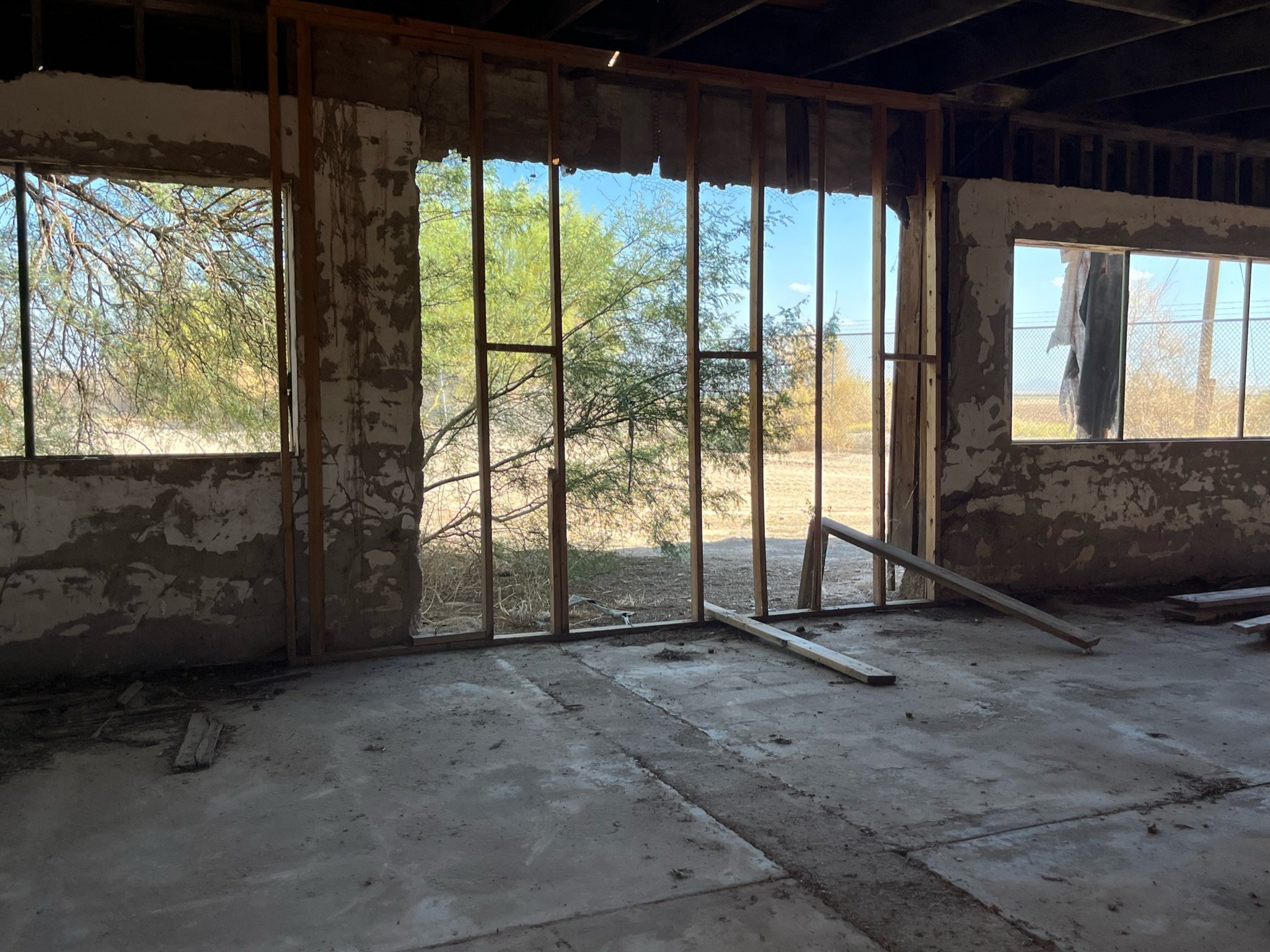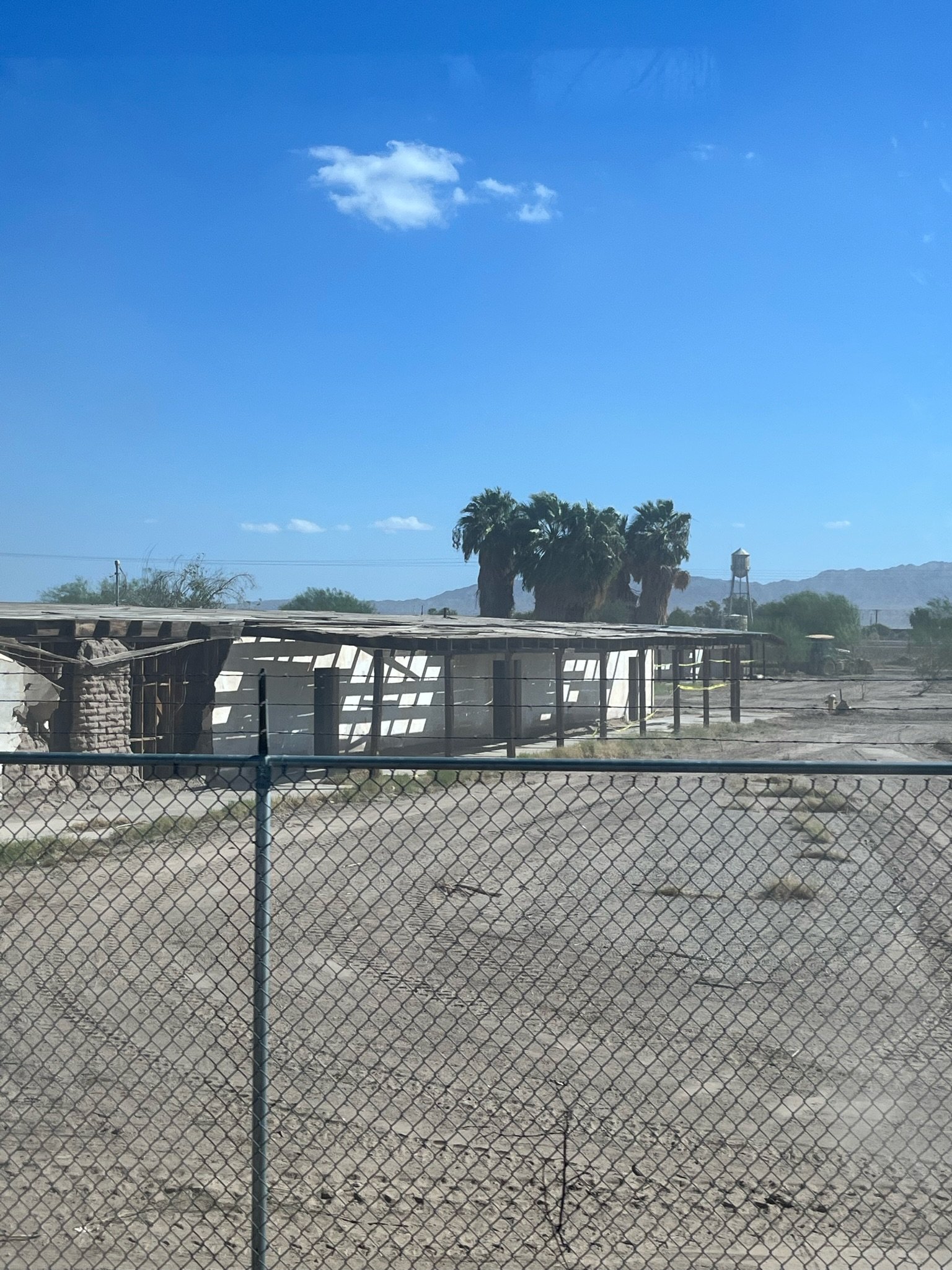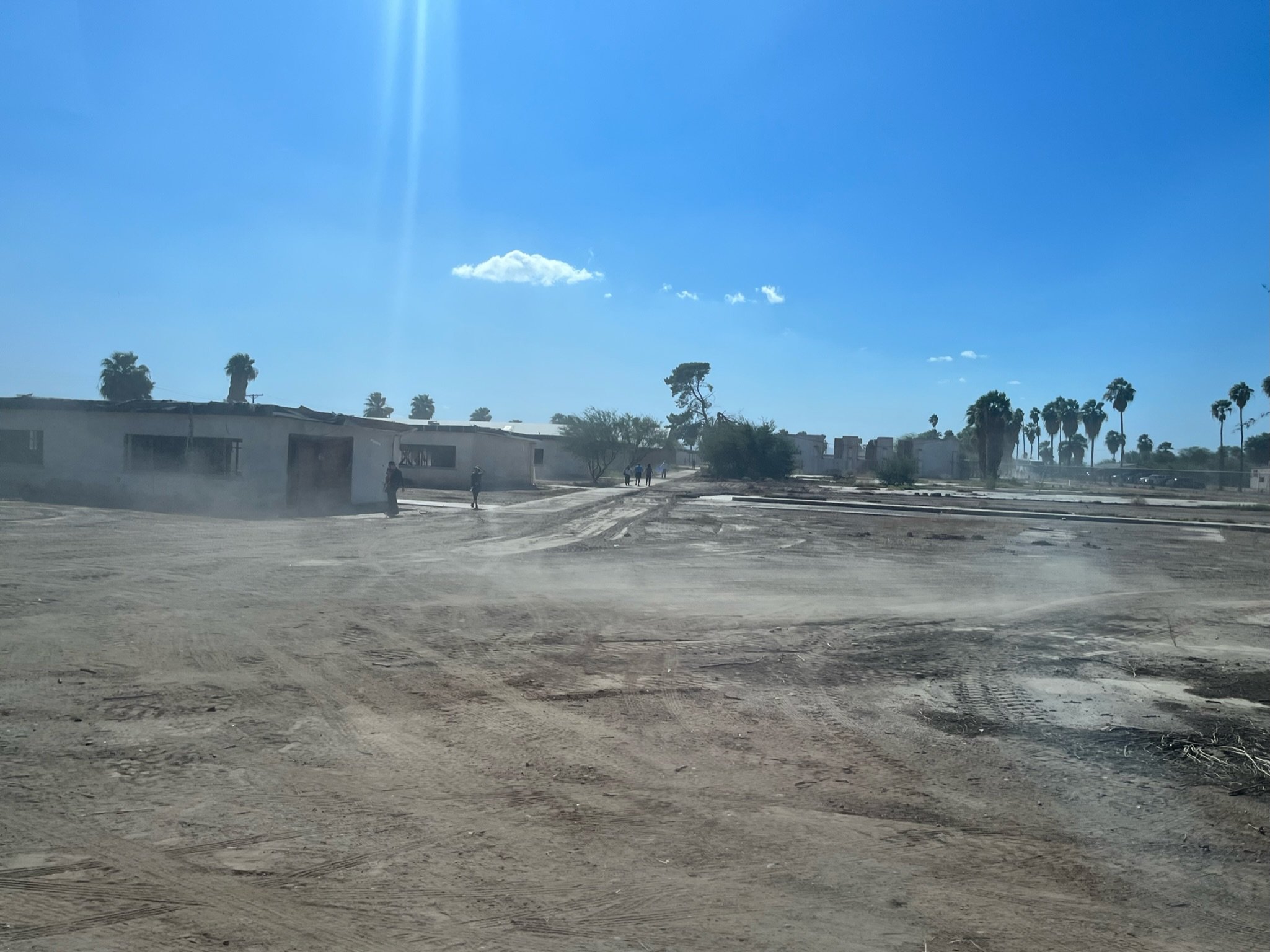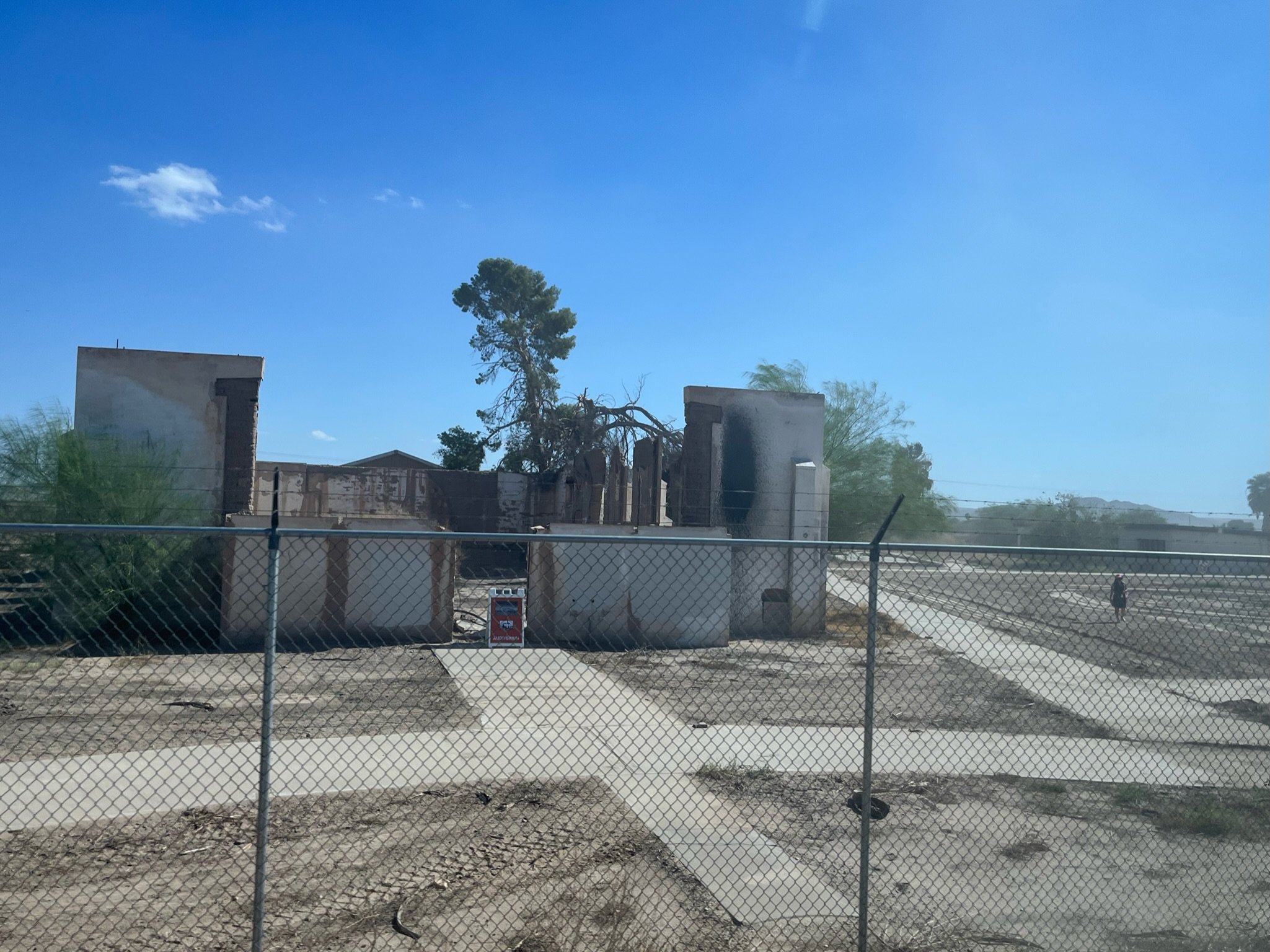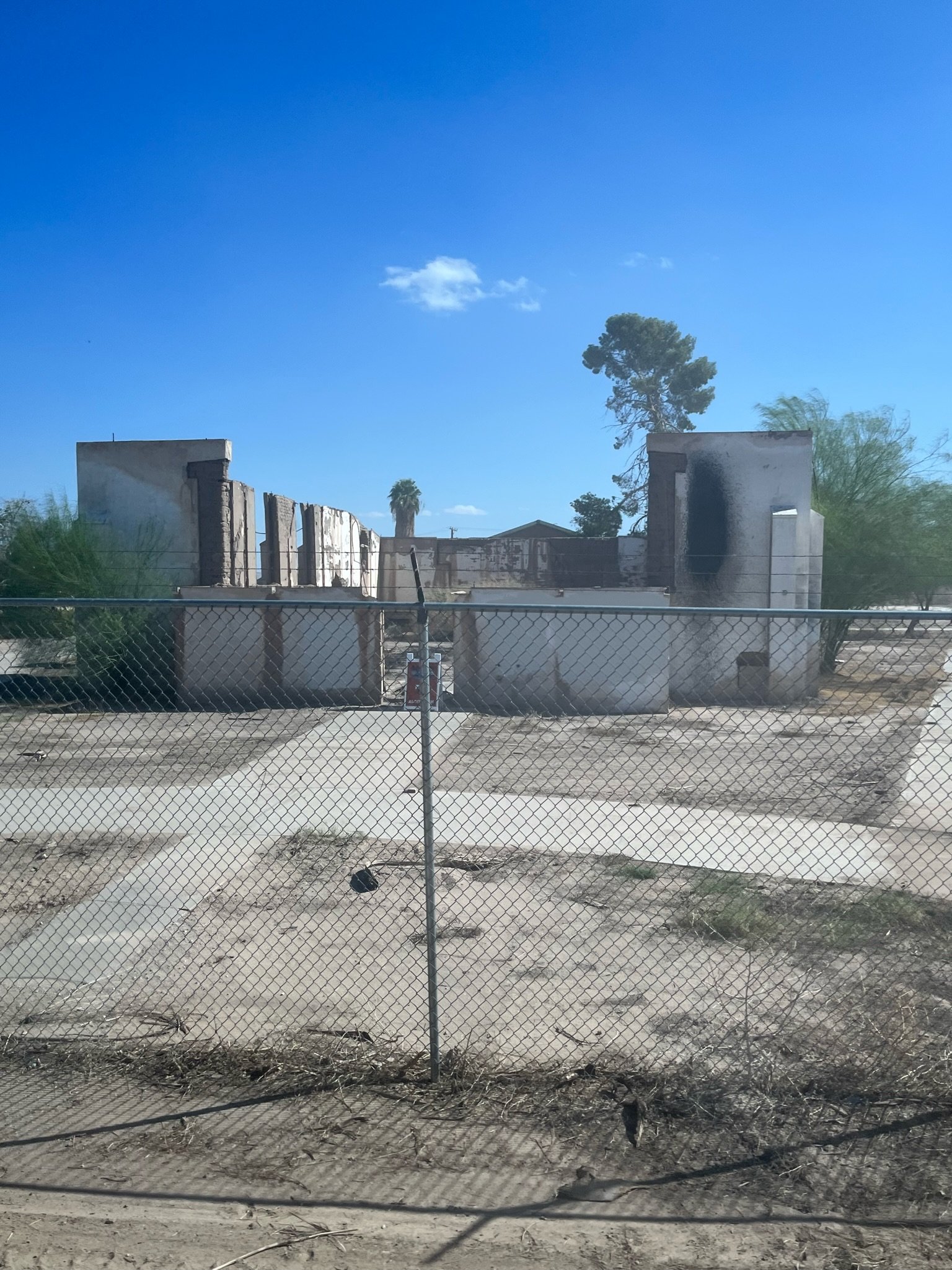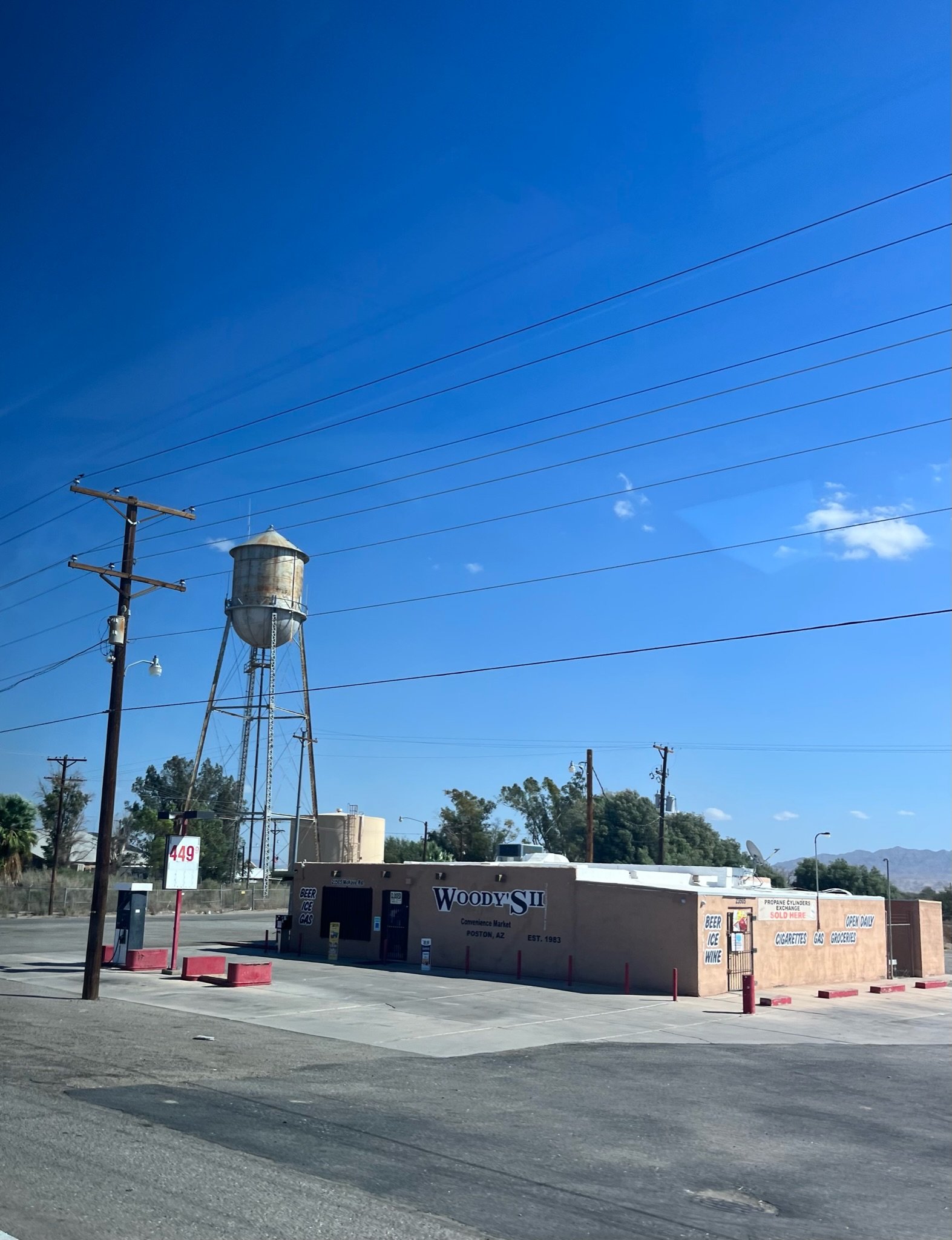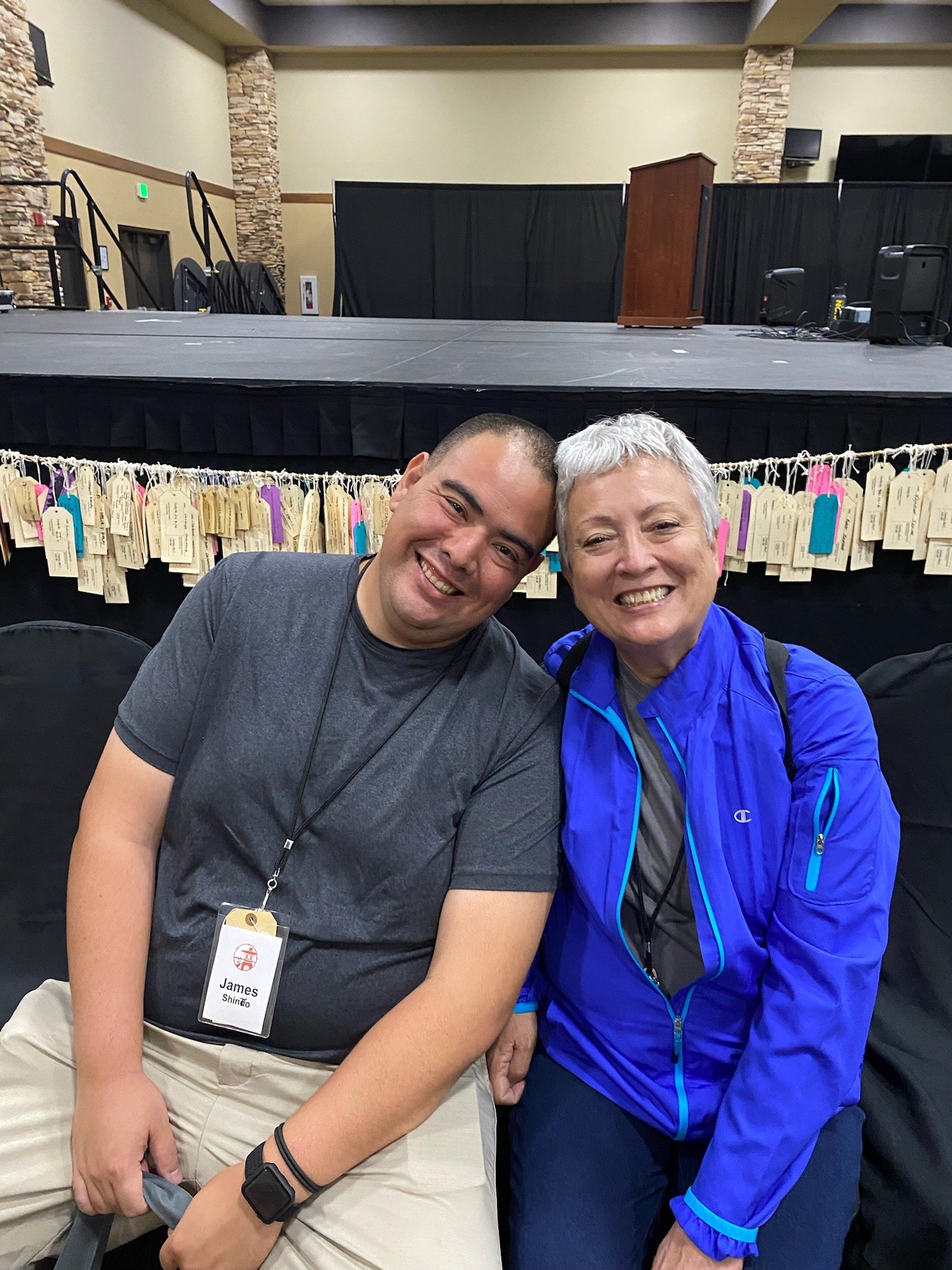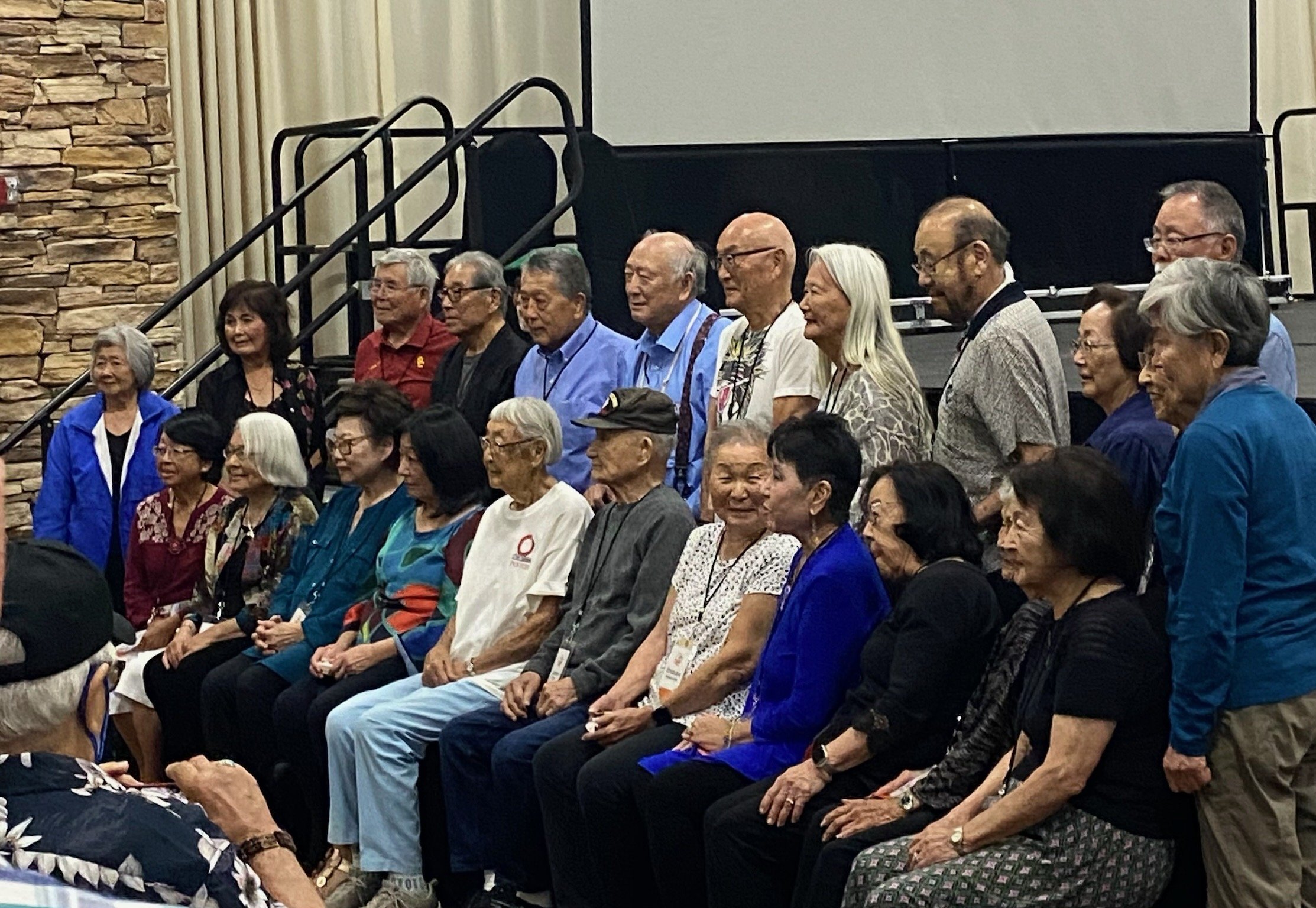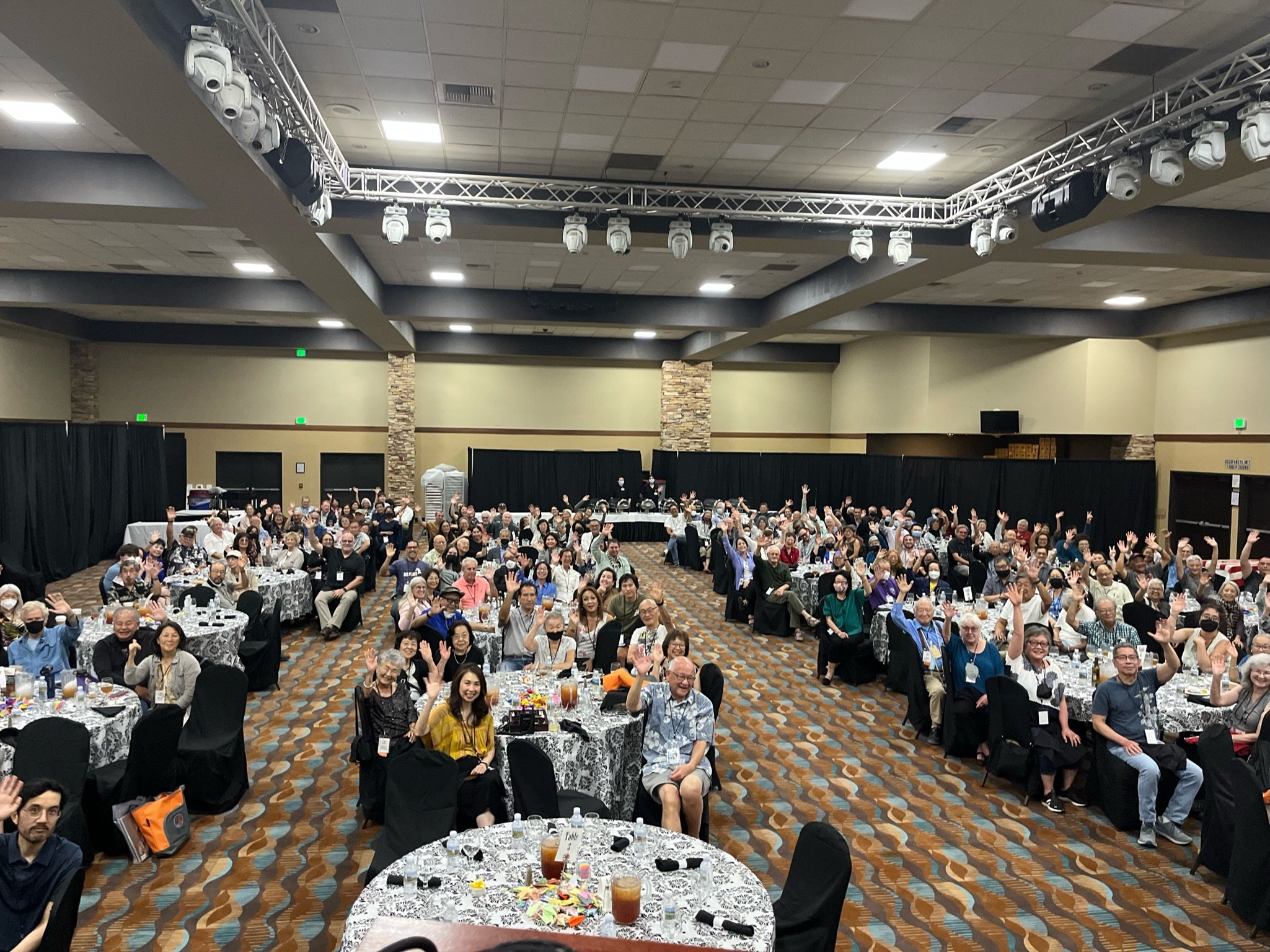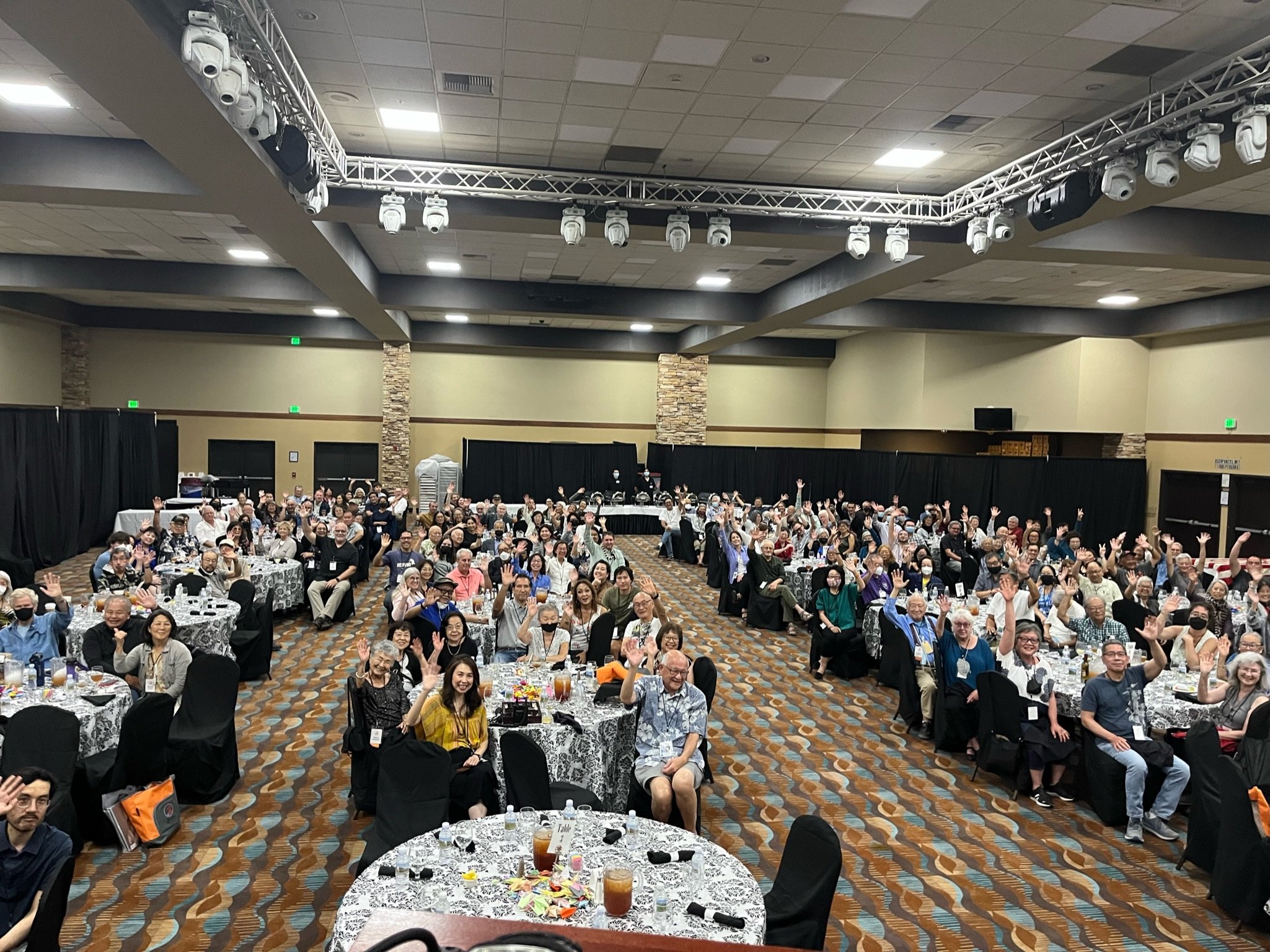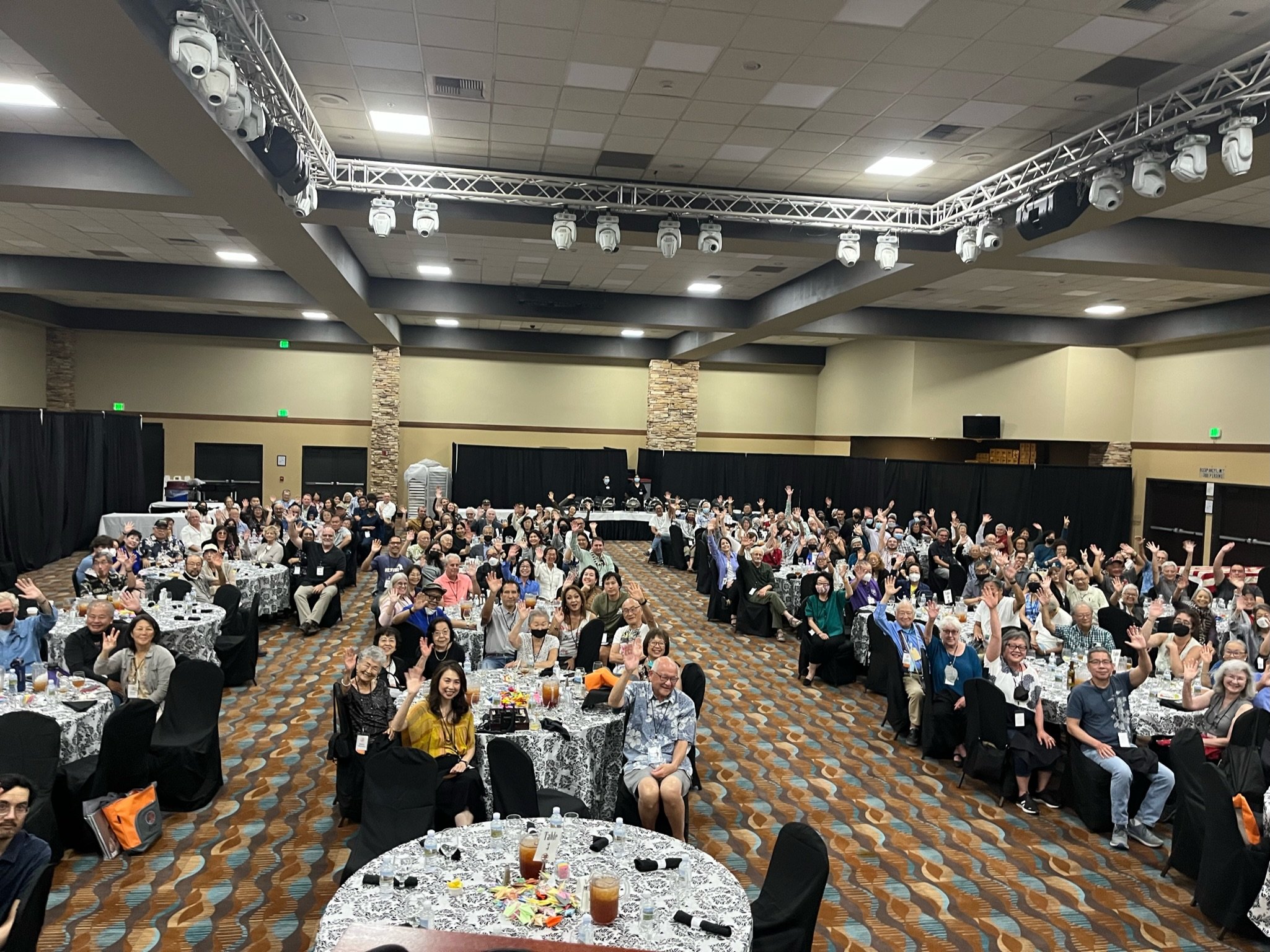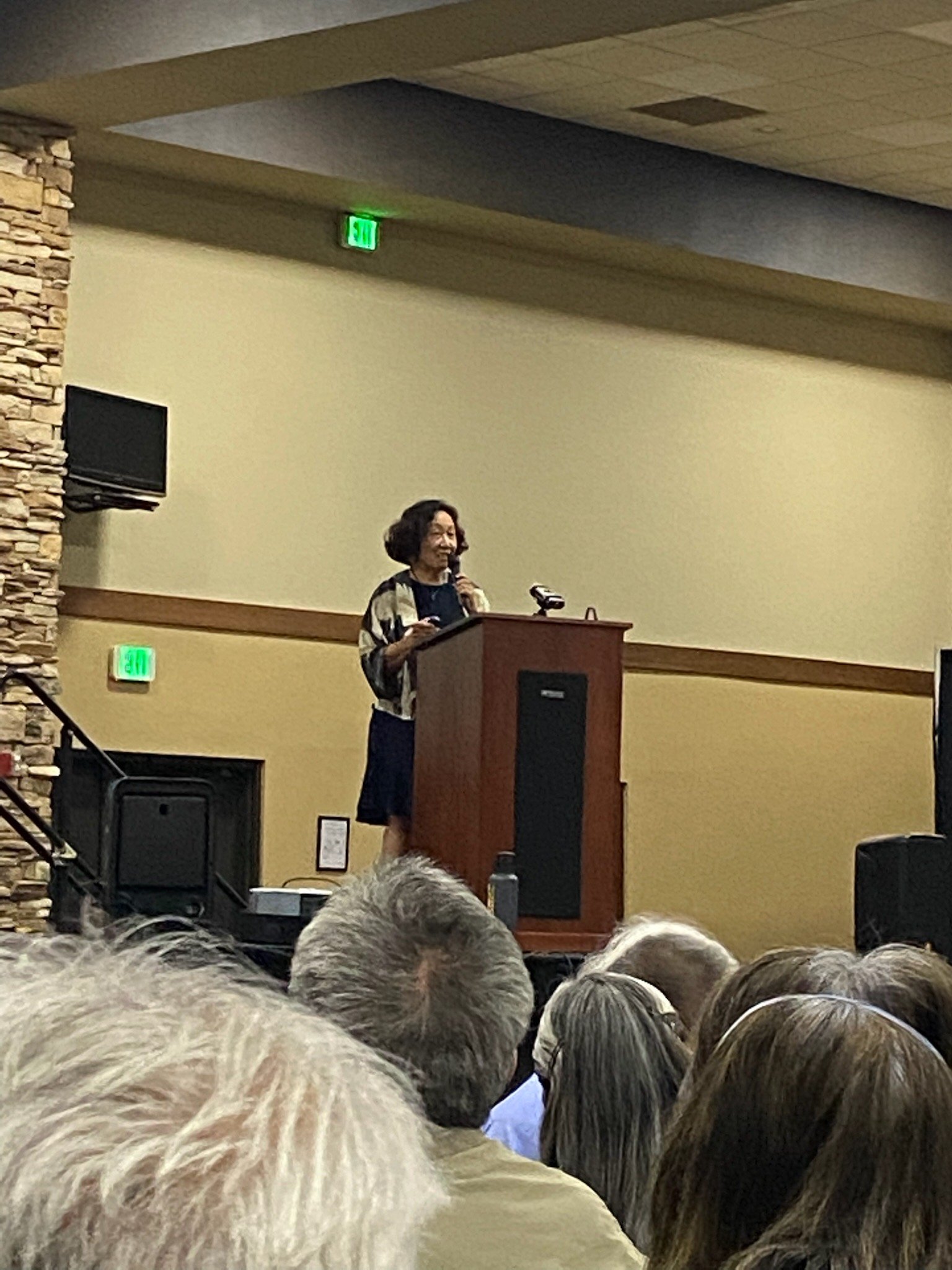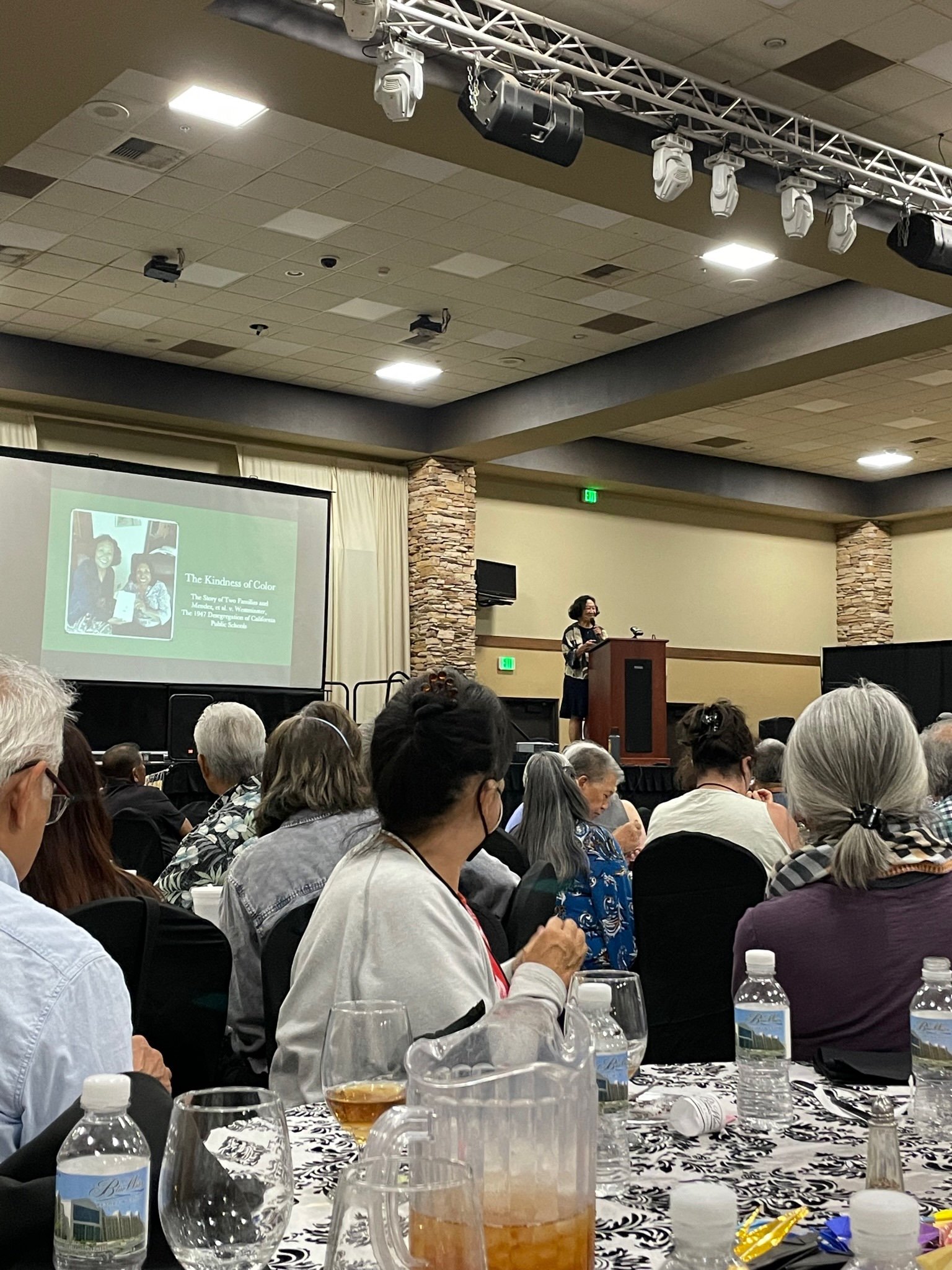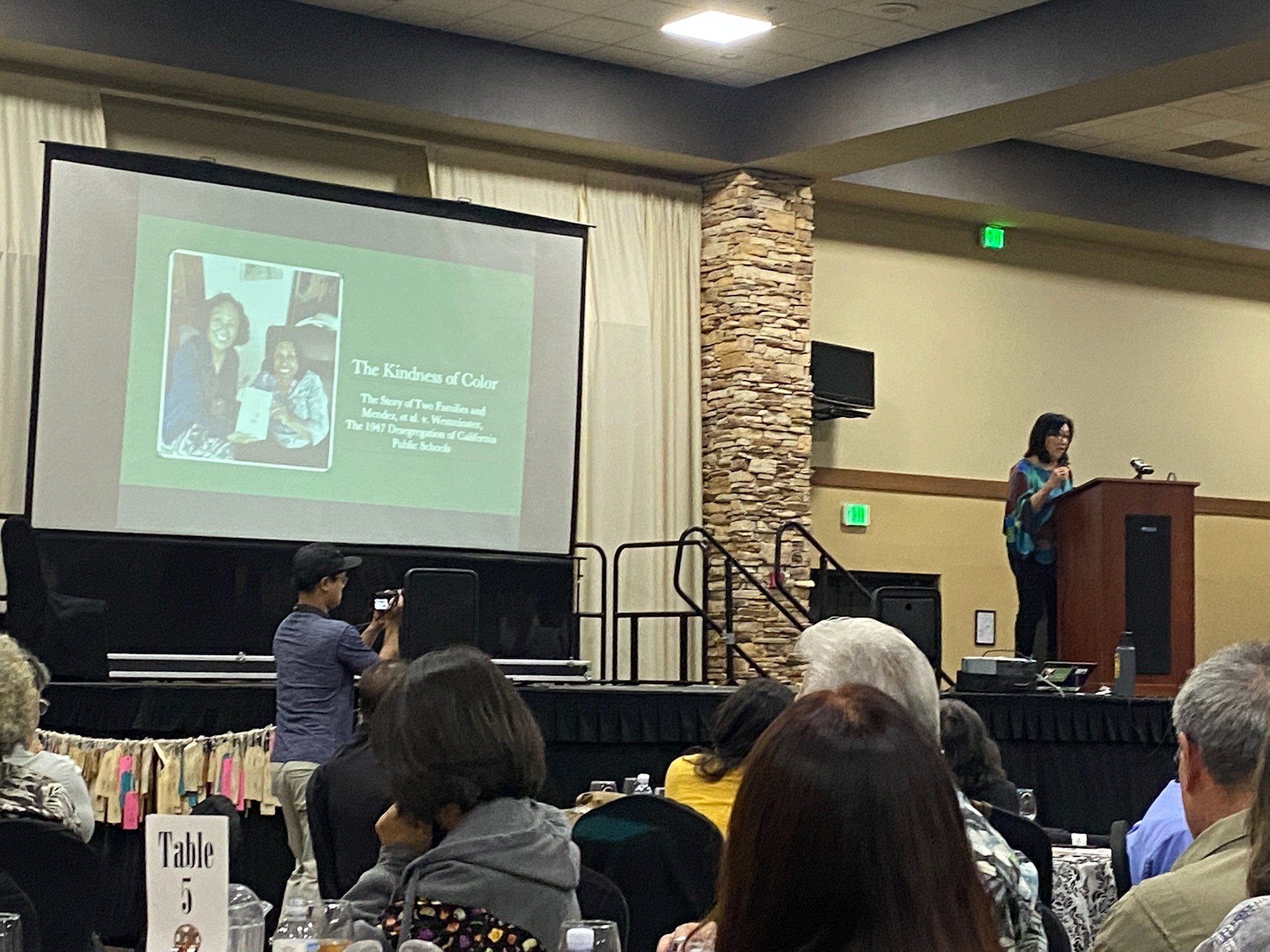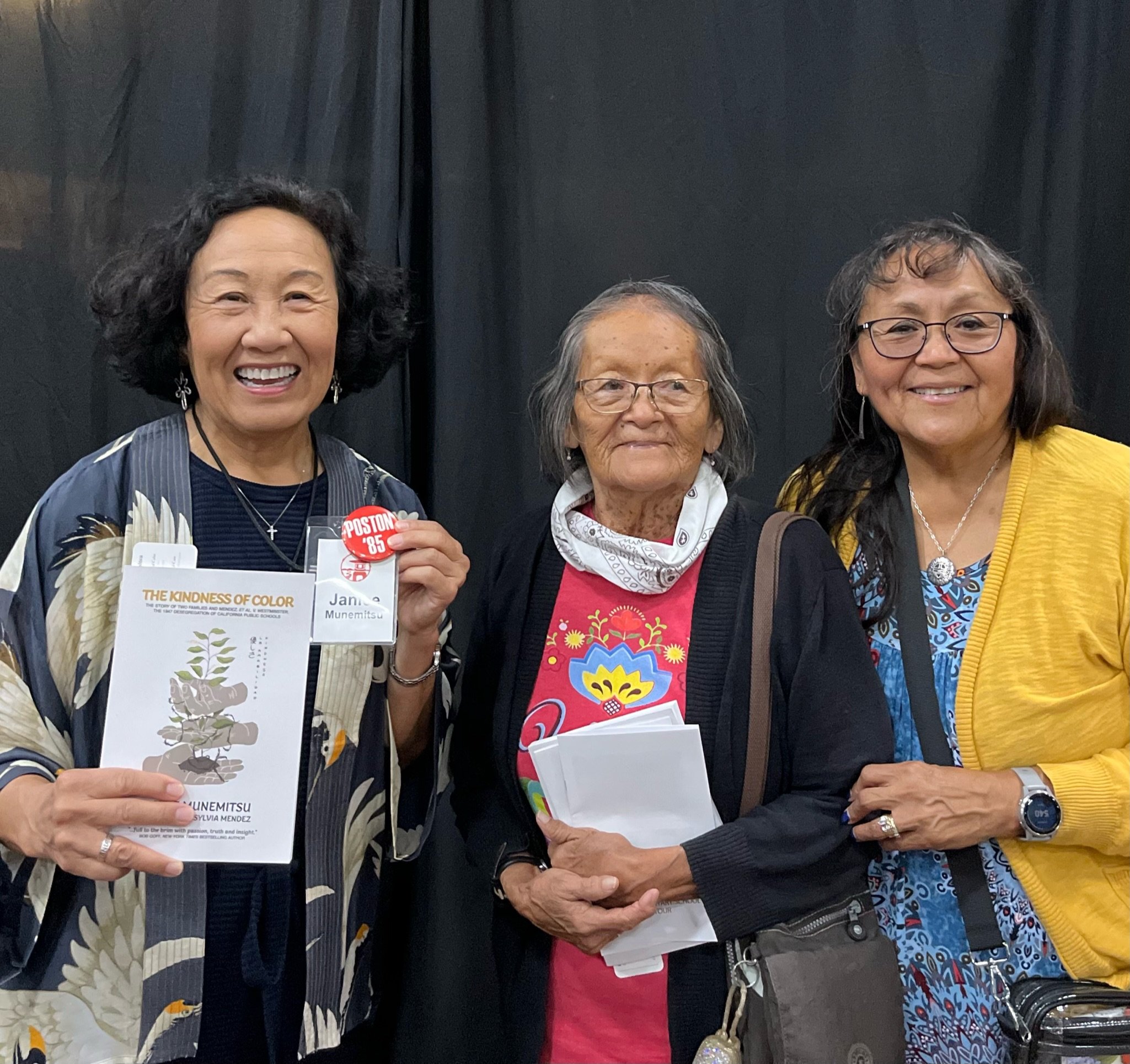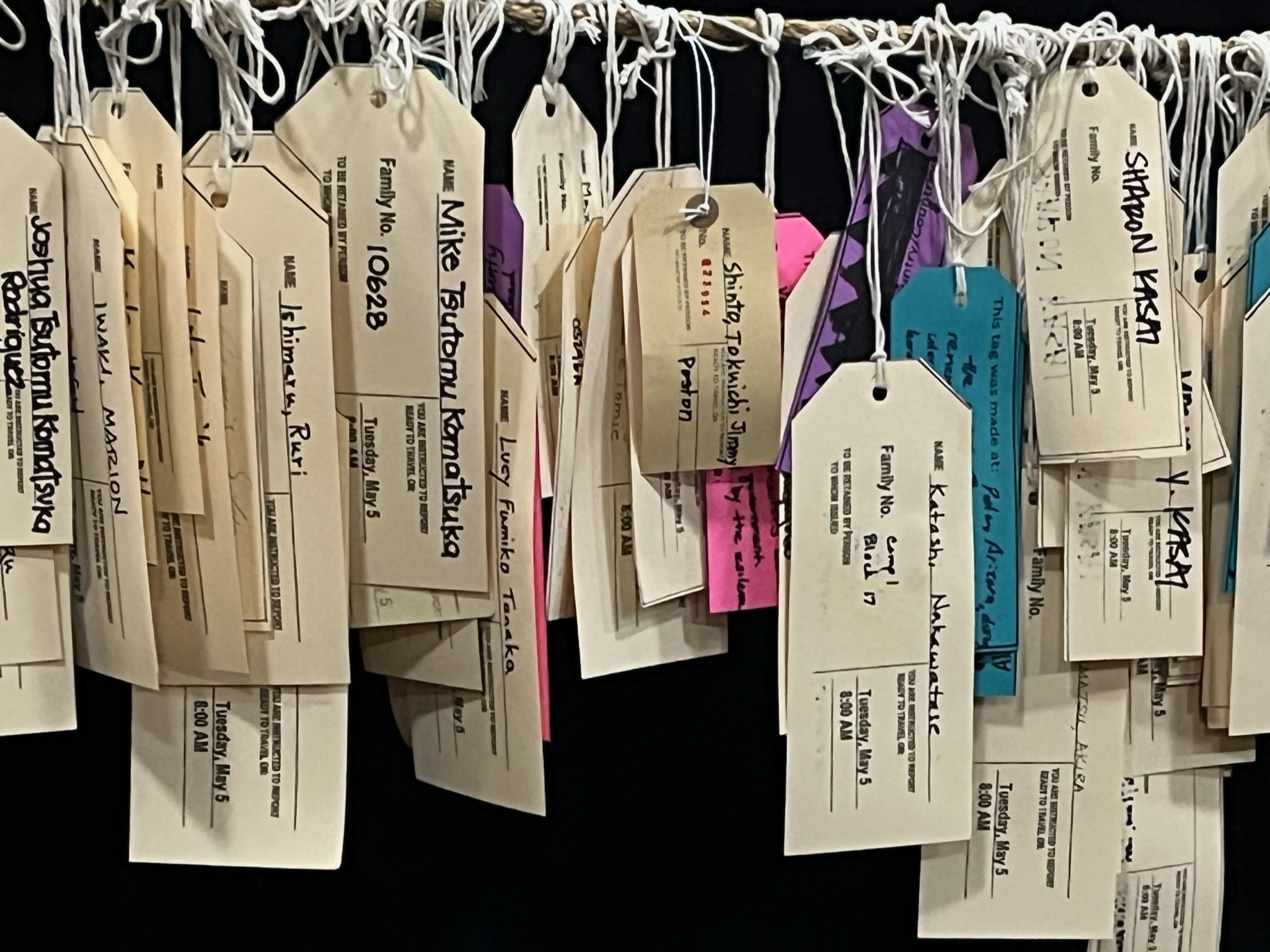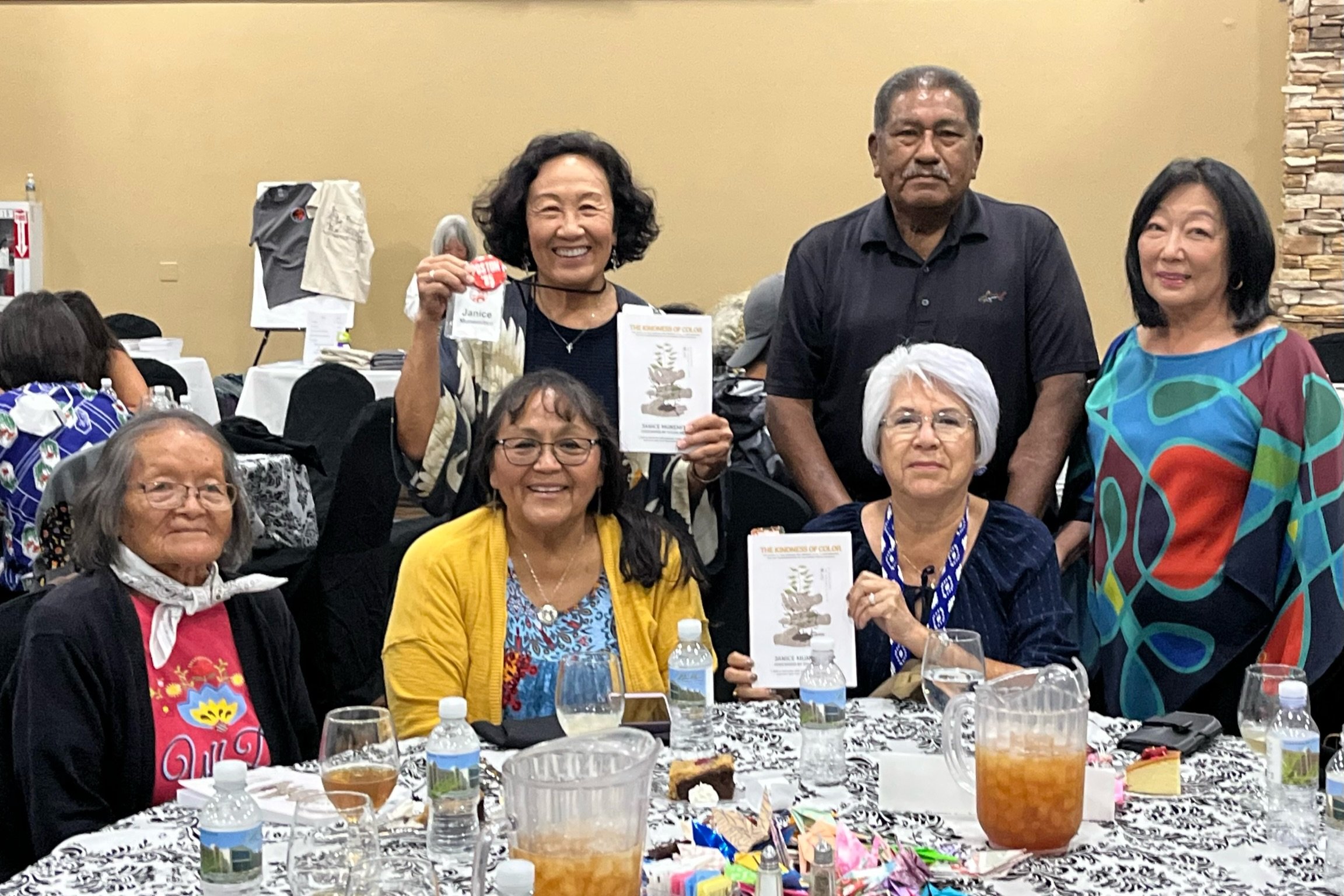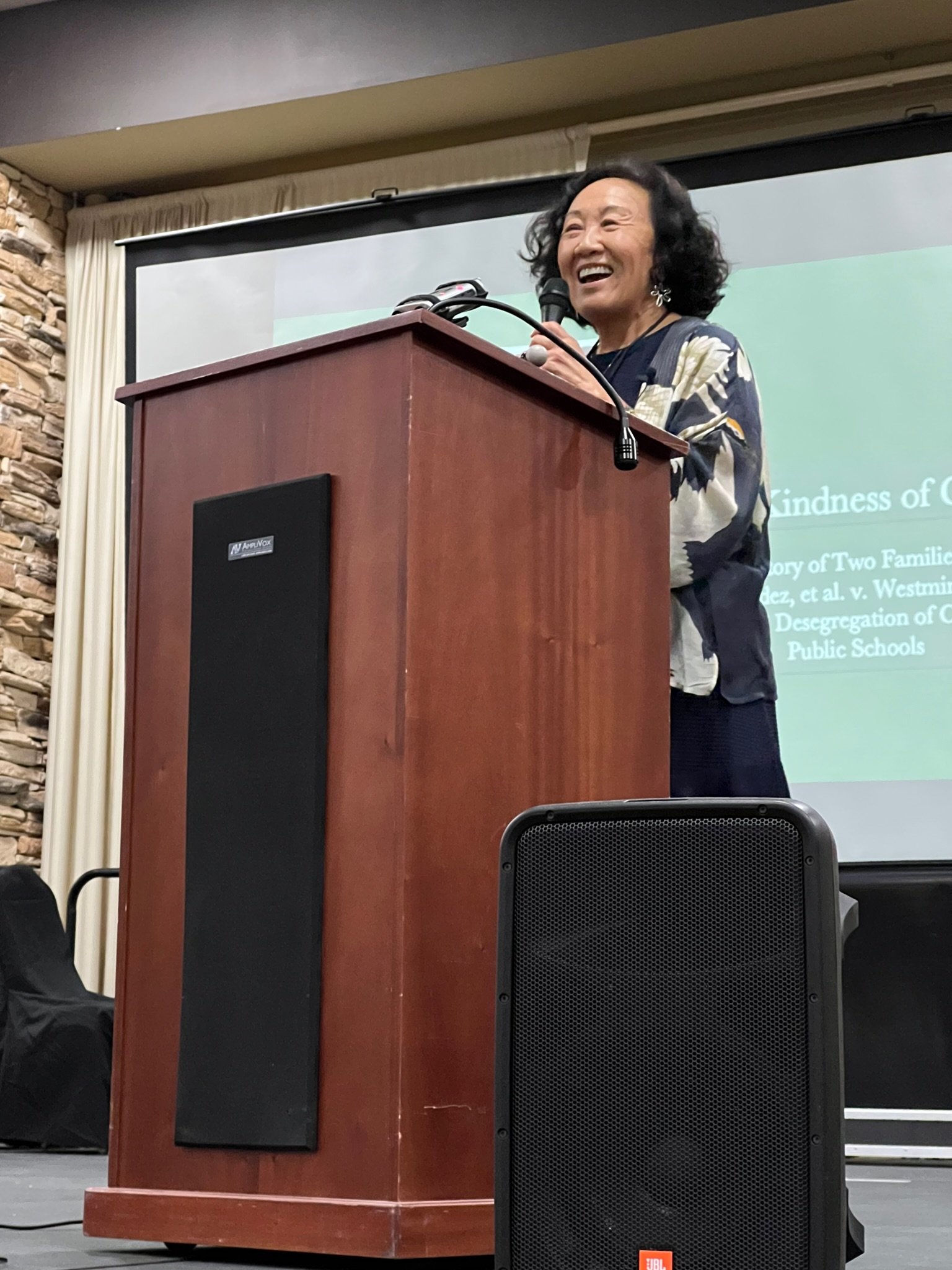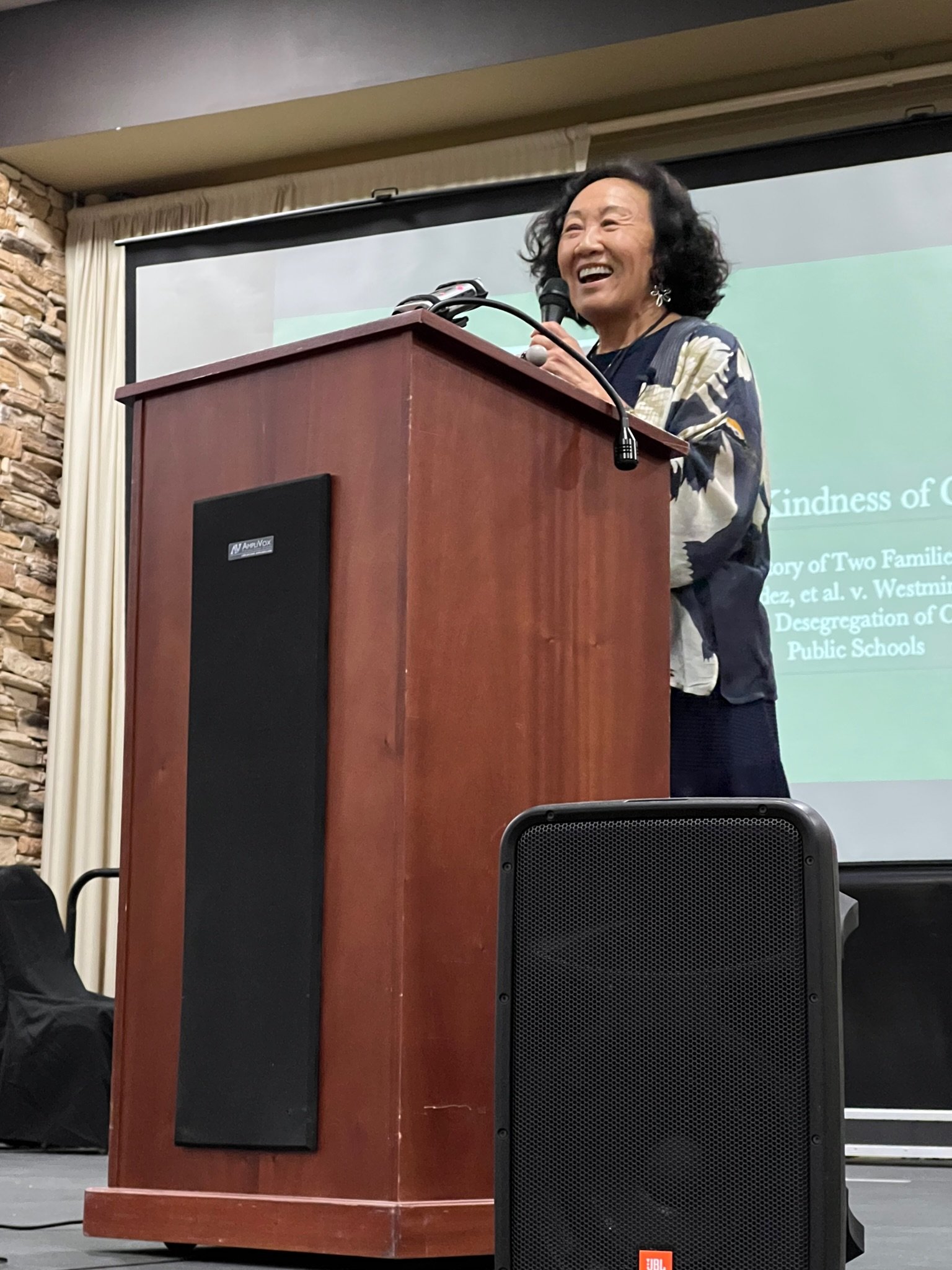My Poston Pilgrimage Experience (Part 3 of 3)
There was so much to unpack that I recount my experience over three blog posts! Be sure to go read part 1 and 2 before coming back here for part 3 to learn about my whole experience.
“Ahout mi-ute” Navajo for “good to be with you.”
Saturday was a full day of pilgrimage! The morning began with the Opening Ceremony at the CRIT Museum, featuring CRIT Chairwoman Amelia Flores and Vice Chairman, Dwight Lomayesva, CRIT Museum Executive Director Valerie Welsh-Tahbo, Native BIrd Singers, and Hopi Ribbon Dancers. The leaders of the CRIT nation spoke about living in former barracks after the Japanese Americans left Poston and the legacy of what the Japanese left behind. Amelia Flores spoke about the common things her tribe and the pilgrims have in common in the legacy of Poston. It is a time to “Come to heal, make new friends, and support this collaborative relationship to keep the legacy of Poston alive.”
Valerie Welsh-Tahbo acknowledged three things that remain today from the hard labor of the Japanese Americans: 1) The Mojave Road was engineered and built by camp residents, bringing infrastructure to the center of the CRIT land; 2) The irrigation system off the Colorado River and canal system is the source of water for the agricultural crops still today; and 3) The barracks were used by the Navajo and Hopi tribes when they were relocated to CRIT land in 1945. The Japanese Americans also built a whole school system of adobe bricks to educate their children - with the Poston I school buildings still standing today as a National Historic Landmark.
The Native performers were 2 families who performed together with their children, nieces and nephews, and grandchildren. The colorful traditional clothing was beautifully adorned with ribbons and it was an honor to view these performances, continuing traditions passed down through the generations.
To close out the ceremony was Taiko Drummer & Rock Guitarist Ken Koshio, a native of Japan, who now calls Phoenix home. Ken is a multi-talented musician with a great sense of humor. You could tell he really embraces his new homeland. When asked in AZ, what tribe he is from, he responds “Japan-che!” Ken led the crowd in singing “Ue wo Muite” (aka Sukiyaki, a 1960s hit, though it has nothing to do with dinner). This lively and upbeat tune is actually about “walking and looking up, so the tears don’t fall” and “being all alone” in the seasons of life. As I recalled the meaning of the words, they are in direct conflict with the upbeat tune - a repressed sorrow and sadness hidden within a sweet and lively tune. How much this is like the camp experience - incarcerees hiding true emotions of trauma and hardship by trying to show a brave and optimistic face or hiding the family history of the camps by not talking about it at all to the generations.
The Monument with other Pilgrims
How different, and yet beautiful, it was to visit the monument again, now with over 200 others.
I was reminded how each and every one of the Japanese Americans who were incarcerated has a unique story, and each pilgrim's visit to the monument would bring lasting but different emotions and memories. And it was windy! As if on cue, the winds picked up and we experienced some of that desert wind that was notorious throughout the camps.
On Thursday, my first visit to the monument was solitary and reflective. On Saturday with other pilgrims, it was a show of unity and community remembering and honoring our families for what they endured those three years in the camps. And not just what they endured, but the infrastructure they built on the CRIT lands. Their legacy is not forgotten.
Poston Camp 1 Elementary School Site
Just a short distance away from the monument, we drove past the barbed wire fence (it keeps vandals out) to the Poston Camp 1 Elementary School, built by the Japanese American community for the children of Poston 1 camp. A National Historic Landmark since 2012, the school buildings are made of adobe bricks and it's the only location of all the 10 incarceration camps where the camp classrooms still stand. In all, the Poston incarcerees manufactured nearly 700,000 adobe bricks to build the schools in all 3 camp sites, with each brick weighing over 40 pounds each.
This is the school that my aunts attended from ages 7-10. My aunt Kazi has her class picture in front of one of them, and though weathered, the adobe classrooms look much the same today. It’s easy to imagine it being a school campus - laid out very traditionally with classrooms, a library, an auditorium, playground and basketball court. There were 5,390 students in 12 grades with a faculty of 122 incarcerated teachers and 87 teachers from the outside, many of whom were retired and chose to serve these children.
When I visited on a family trip as a child, the auditorium, completed in June 1943, still had a domed roof and was in good working condition. Sadly an arson fire destroyed the auditorium in 2001, but the adobe walls still stand intact. The buildings were used by the CRIT and Parker School District for community and educational training purposes until 1980.
It's very important for these buildings to be preserved and recognized, and I plan to support the preservation efforts to make sure there are tangible reminders of this important history. (For information to support the preservation efforts, go to the postonpreservation.org site)
La Pera K-8 School for Lunch & Workshop
Our lunch break was at La Pera K-8 School, hosted by Principal Brian Wedemeyer and 3rd Grade Teacher Wilma McKenzie. Lunch was in the Rebels’ gym with a presentation on the preservation efforts being made to the Poston I school site and the desire to bring a barrack back to the site and restore it as a museum. Workshops followed in the classrooms after lunch.
It was finally at La Pera, that WIlma McKenzie saw my “Poston ‘85” red button from my parents' pilgrimage in 1985. I was wearing it in hopes someone might have been in Poston at that time. Wilma recognized it because she has the same button too! Her mother, Maxine Polacca Morris was one of the Hopi who were relocated from their native land to Poston in 1945; she too lived in one of the barracks upon arrival. Years later her church, Poston Community Baptist Church was strategizing about what notable event they could do, it was Maxine who said, “what if we invited the Japanese to come back?…” and Poston ‘85 became a reality, the first “homecoming” for the Japanese American Poston community, and a real pilgrimage for my mom and dad.
Wilma said Maxine was coming to the banquet and I couldn’t wait to meet her!
My First “Keynote” for The Kindness of Color
I was so excited to meet Maxine that I didn’t have time to be nervous about giving the keynote address for the banquet of 250! She is delightful and re-told the story of how the idea of Poston ‘85 came about. She remembered key names of the pastors and leaders who organized the event. She also recounted how they cooked 400 meals over 2 days!
I told her how my mother loved the Navajo Fry Bread and asked if she still made it from scratch. “Yes, but not often. But we cooked for days for that homecoming.” Wilma was just a young girl back in 1985, but she remembered helping out as well.
I found the pictures on my phone and showed them the pictures my father had taken of the church grounds, inside the church, and group pictures of the event. And guess what! “That’s my mother and my sister!” declared Maxine. My dad had taken a picture of Maxine’s mother and sister that day 37 years ago! We exchanged contact information and I told them I would send the pictures and also copies of the 1985 program that I had at home. I just love this Hopi- Poston ‘85 connection I made!
Then it was time for me to share our story and The Kindness of Color. I’ve done this many times so far, but this was the biggest audience yet. It was really satisfying for me to tell the story to an audience who understood Japanese culture, knew about the internment and about the Poston Camp. I felt excited to share the redemptive story of those hard years and the intersection of the Mendez story, leading to the desegregation of California public schools.
And at the end, I had them all wave so I could have a “group” picture of these pilgrims that came from all over the US to honor all their families and share the legacy of Poston.
There was so much to unpack that I recount my experience over three blog posts! Be sure to go read part 1, enjoy part 2 here, and then part 3 to learn about my whole experience.



